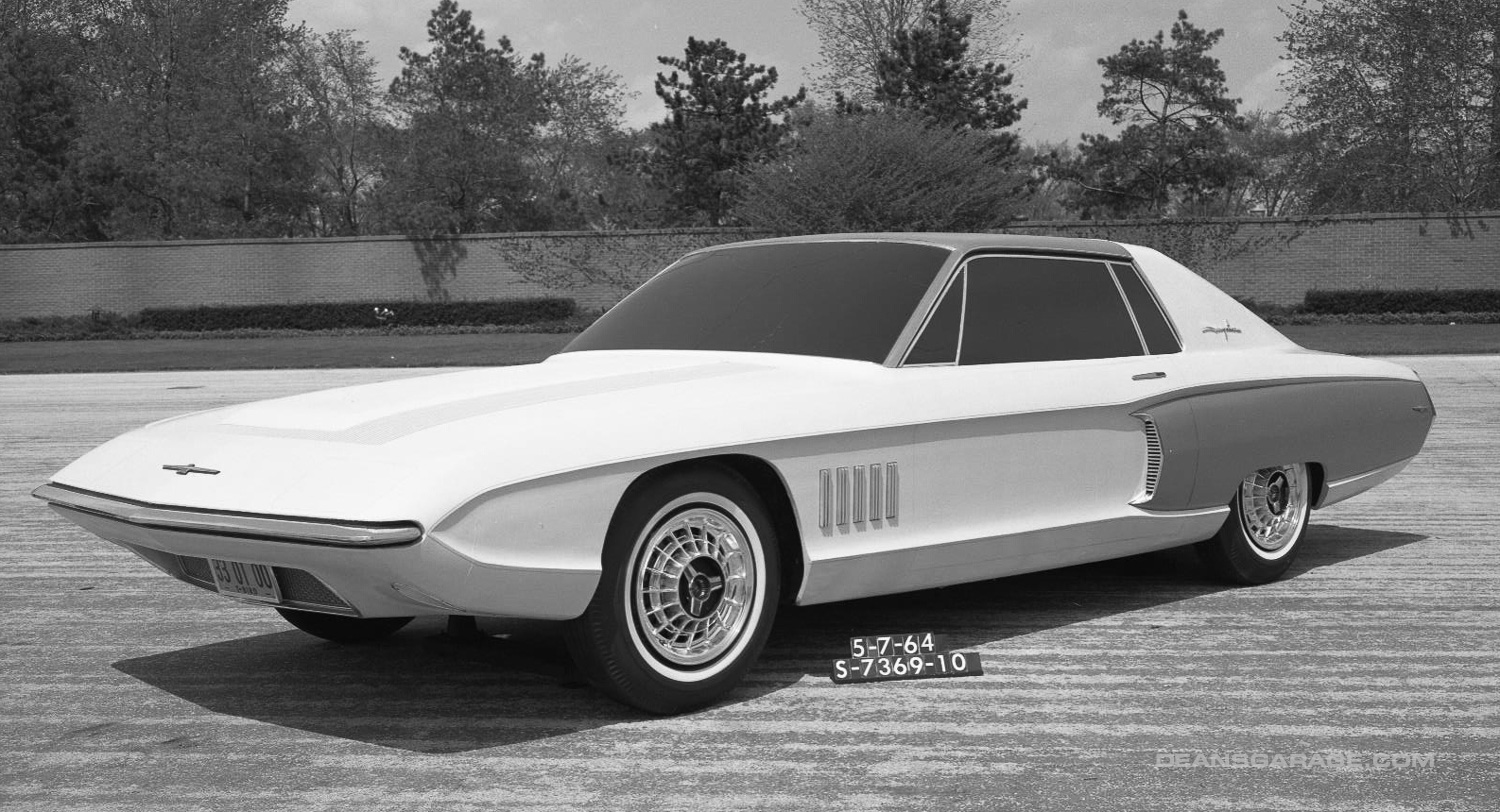
A Design at a Crossroads
By Todd Duhnke
Schick! My dad’s razor!
That was the first impression I had when I first saw the grille on the all-new ’67 Thunderbird at H.P. Smith Ford in the fall of ’66. Every year my dad and I would go and see all the new cars. Searchlights in the sky, big balloons, plastic model giveaways, brochure racks full to the brim, showroom windows plastered with “New! New! New!” For a teenager enamored with cars it was an exciting time.
The Thunderbird was at a crossroads with the ’67s. Not only because it went from a unitized body to body on frame construction. Not only because it now shared its once exclusive production at Wixom with Pico Rivera just east of Los Angeles. Instead of being built only with Lincolns it would come down the line at Pico Rivera with regular Fords. No longer would a convertible be offered, but a four door would. The car was moving from a personal luxury car with a very sporty flair to being more luxury oriented. Even a bench seat was now offered with the ’68s. What caused this significant change in direction? Was it due to a change near the top of Ford management? Had the sporty Thunderbird lost one of its key supporters?
Through the late fifties and early ’60s Lewis Crusoe, Robert McNamara and James O. Wright followed each other through a variety of positions. McNamara and Wright were both members of the Whiz Kids.
After Crusoe suffered a heart attack in 1956, which in ’57 forced his retirement, Robert McNamara was promoted to his position as group vice president for Ford car and truck. Jim Wright took over McNamara’s role as head of Ford Division. Later in 1960 when McNamara became president of Ford Motor Company, Wright again assumed McNamara’s old role as group vp. McNamara and Wright were close. Along came Lee Iacocca to take Wright’s position as head of Ford Division.
Both McNamara and Wright held considerable sway in terms of Ford’s design direction. When designing the ’61s Jim Wright with Joe Oros’ and Bill Ford’s support fought for a ’61 Thunderbird design that was sporty looking. And not such a formal theme as Elwood Engle’s team had developed. As Jim Farrell noted in Design of the 1961 Lincoln, Part 2, published in Dean’s Garage on 6/15/2023, Wright and Oros prevailed and the Ford Studio’s ’61 Thunderbird proposal reached production and Engle’s proposal went on to become the highly respected ’61 Continental.
As lead times are so long it becomes the task of the new group vp and division head to implement and produce what his predecessors have established as a package and theme. By the time Iacocca had settled into his new position in 1961 and ’62, the ’64 through ’66 Thunderbird was well defined except for the details. The ’67 Thunderbird was likely the first Thunderbird where Iacocca could imprint his direction. And it is well documented that Iacocca favored formal and rather baroque designs with large stand-up grilles as most evidenced by late ’60s and ‘70s Lincolns. Perhaps the first evidence of his influence on the Thunderbird started to appear in the ’67s?
The move away from a sportier Thunderbird lost a supporter when Jim Wright was passed over from becoming Ford’s president to John Dykstra. He departed Ford in ’63 for Litton Industries. Clearly the peak of this sportiness was the ’62 and ’63 Sports Roadster and its unique Bud Kaufman designed tonneau cover. Which even carried over in part to the ’64s, but no longer as a special model.
With Iacocca more in charge and influential the emphasis seemed to change. And the market also changed with the introduction of the gorgeous ’63 Buick Riviera and later with the ’66 FWD Olds Toronado. Competition was rising to meet the Thunderbird’s earlier dominance in the personal luxury market.
It’s likely we’ll never know the true extent of Iacocca’s imprint on the design theme of the ’67’s, but it had to be extensive as it was Dave Ash’s Special Development studio where the genesis of the ’67 Thunderbird theme arrived from. And it was Iacocca who created this studio to have three theme choices, three flavors, or as he said, “Chocolate, Vanilla and Strawberry.” That being said, it is known that when he was shown the mockup of the four-door Thunderbird he green lighted it on the spot and said that it was a great replacement for the departing convertible.
While the four door Thunderbird created buzz on the showroom floor, it was a money loser as it had so many unique parts and its frame had to be lengthened 2-1/2 inches to accommodate back seat passengers. It was Hal Sperlich, Iacocca’s product planner, who claimed that even with a unique frame the four door Thunderbird would make money. Sperlich’s savings grace was suggesting that this same lengthened frame be used on the Continental Mark III, which did make lots of money for Ford. Estimated at $2,000 per unit.
Since the 1960s the collector car hobby has embraced Thunderbirds. Go to any car show or auction and you’re certain to see numerous ’55 through ’66 Thunderbirds. They have always been highly collectible, and popularity from early on ensured a high survival rate. You see virtually no ’67 through ’69s in these same venues. Very few and far between, and when you do, it’s mostly the unique four door. It’s a clue in terms of what the market thought about the direction the Thunderbird started to take with the ’67s.
The market in the sixties also spoke with 240,909 ’64 through ’66s being produced. The same three calendar year production of the ’67–’69s only yielded 186,572 built. In fact, the outgoing ’66 Thunderbird outsold the all-new ’67 by nearly 10,000 units. It’s rather rare when an outgoing design cycle outsells the new one. Clearly increased competition played a role in this, but perhaps the new direction of the Thunderbird theme also played a part? Perhaps it was not quite so “Unique in all the World?”
Let’s look at the evolution of the design of the ’67 through ’69 Thunderbird.
Photos: Ford Design
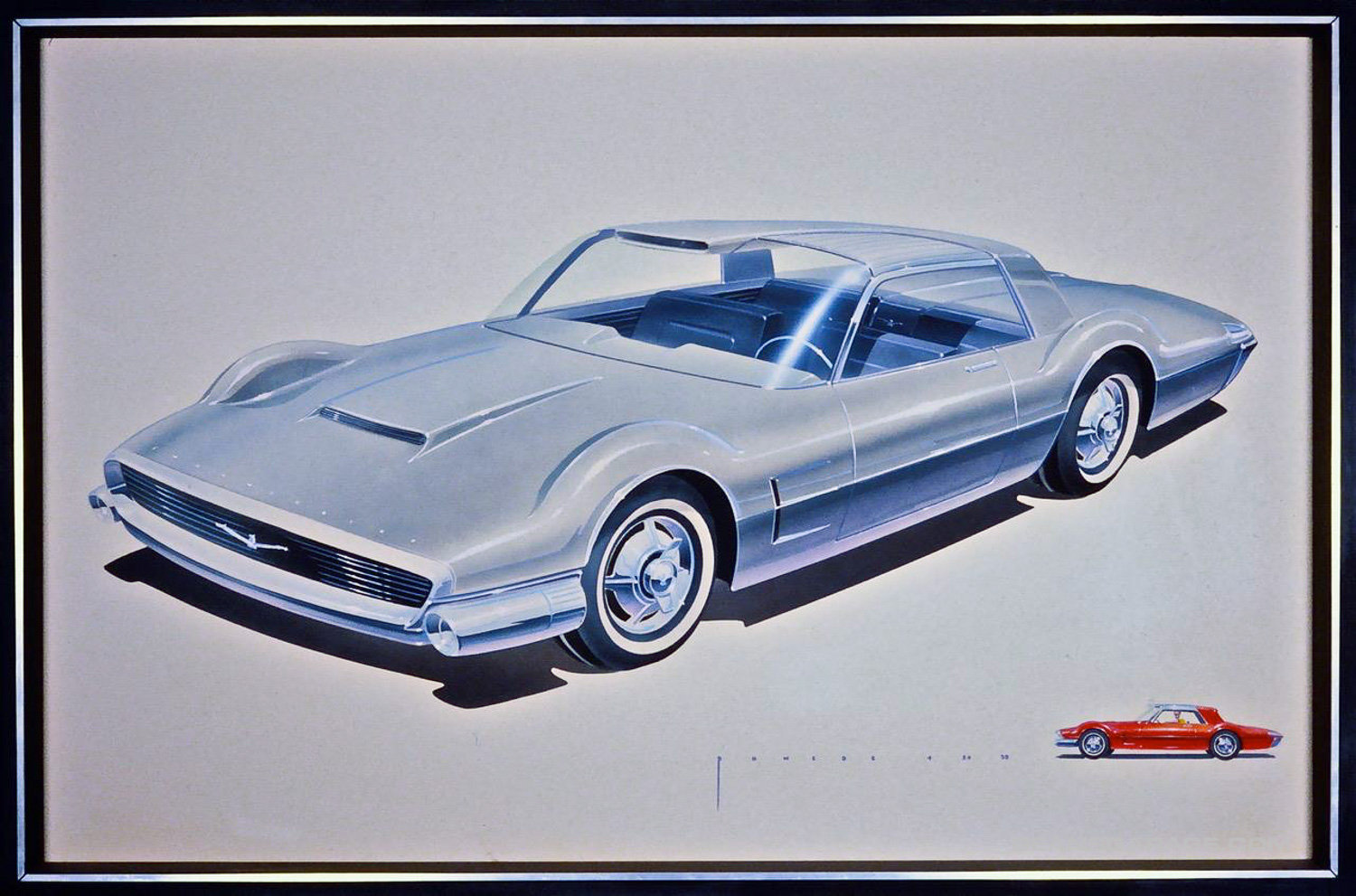
This is one of the first images that can perhaps be tied to the eventual design of the ’67 Thunderbird. It was created by Jim Powers, likely in the late ’50s or early ’60s.
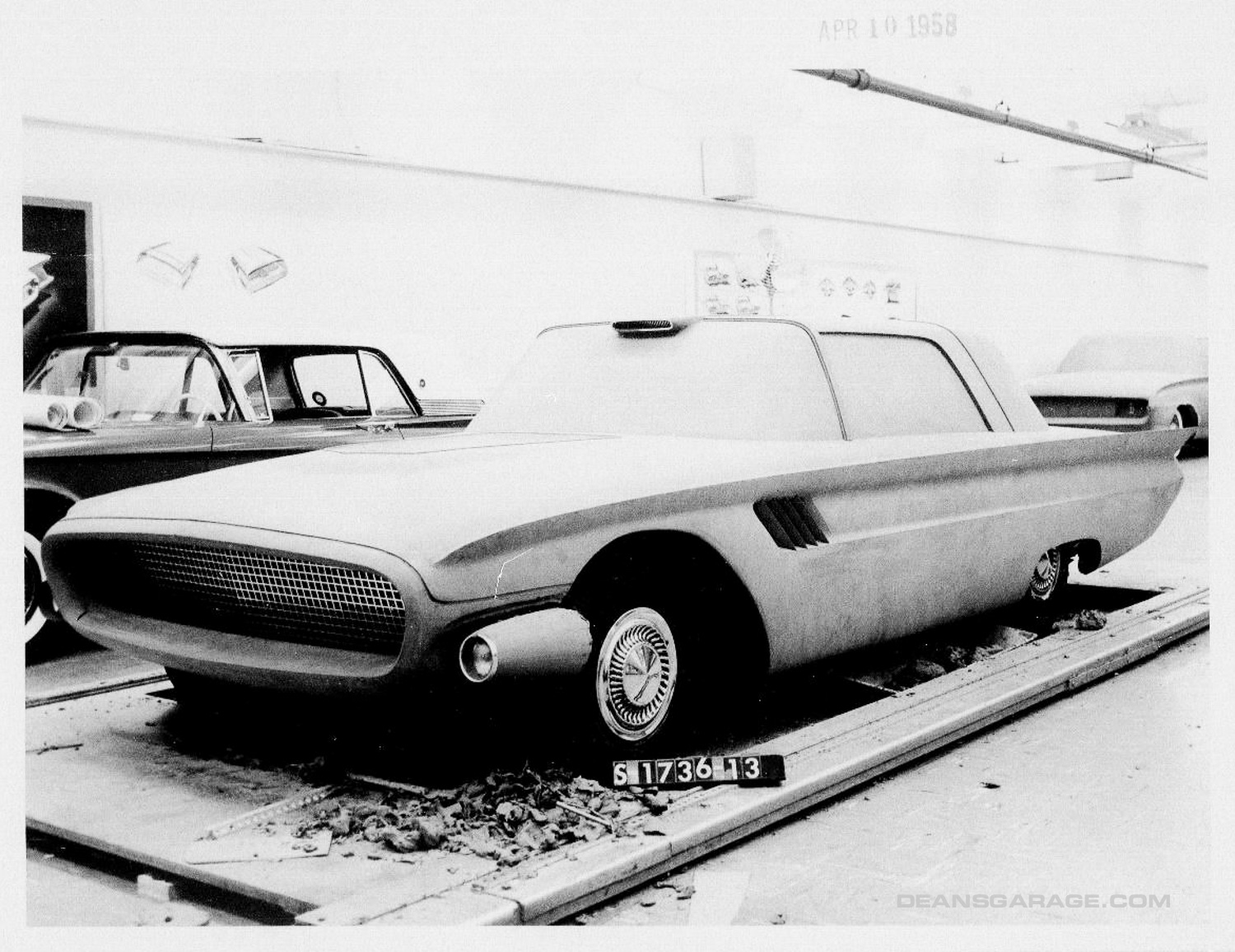
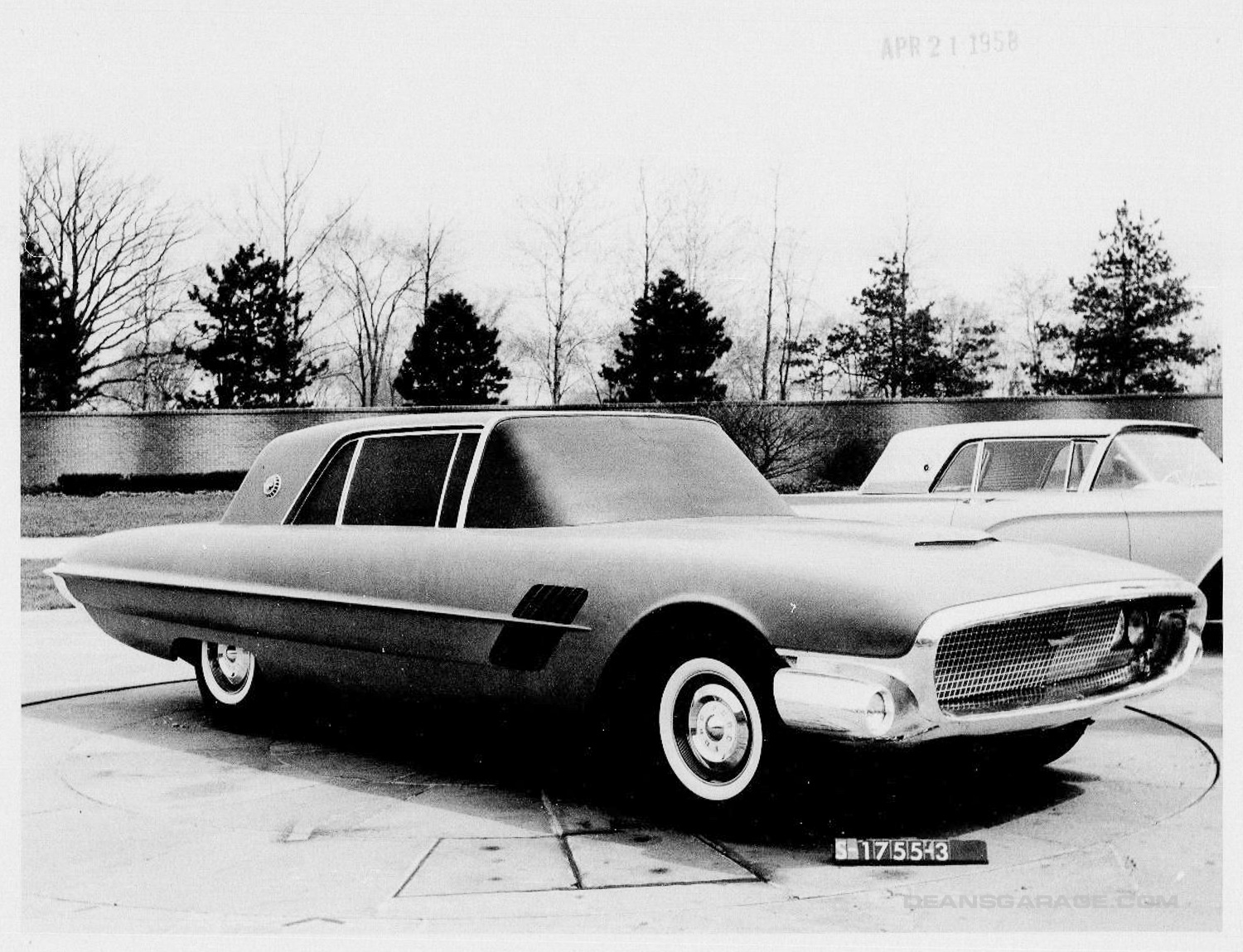
The design of the grille is evolving from Power’s initial sketch into clay. Based upon the consecutive Styling negative number at the base of the front wheel this image is dated from the late ‘50’s. The grille ensemble perhaps also inspired by the North American F-100 Super Sabre jet intake, America’s front line jet fighter of the time.
These three pictures are the first seen showing a front-end theme that seemed destined for the ‘67s. It’s said in Bill Boyer’s book, Thunderbird, an Odyssey in Automotive Design, that this came from Dave Ash’s Special Development studio. Boyer likened it to a Ferrari, though Joe Oros called it a “sucker upper” and a “street cleaner with a big mouth.”
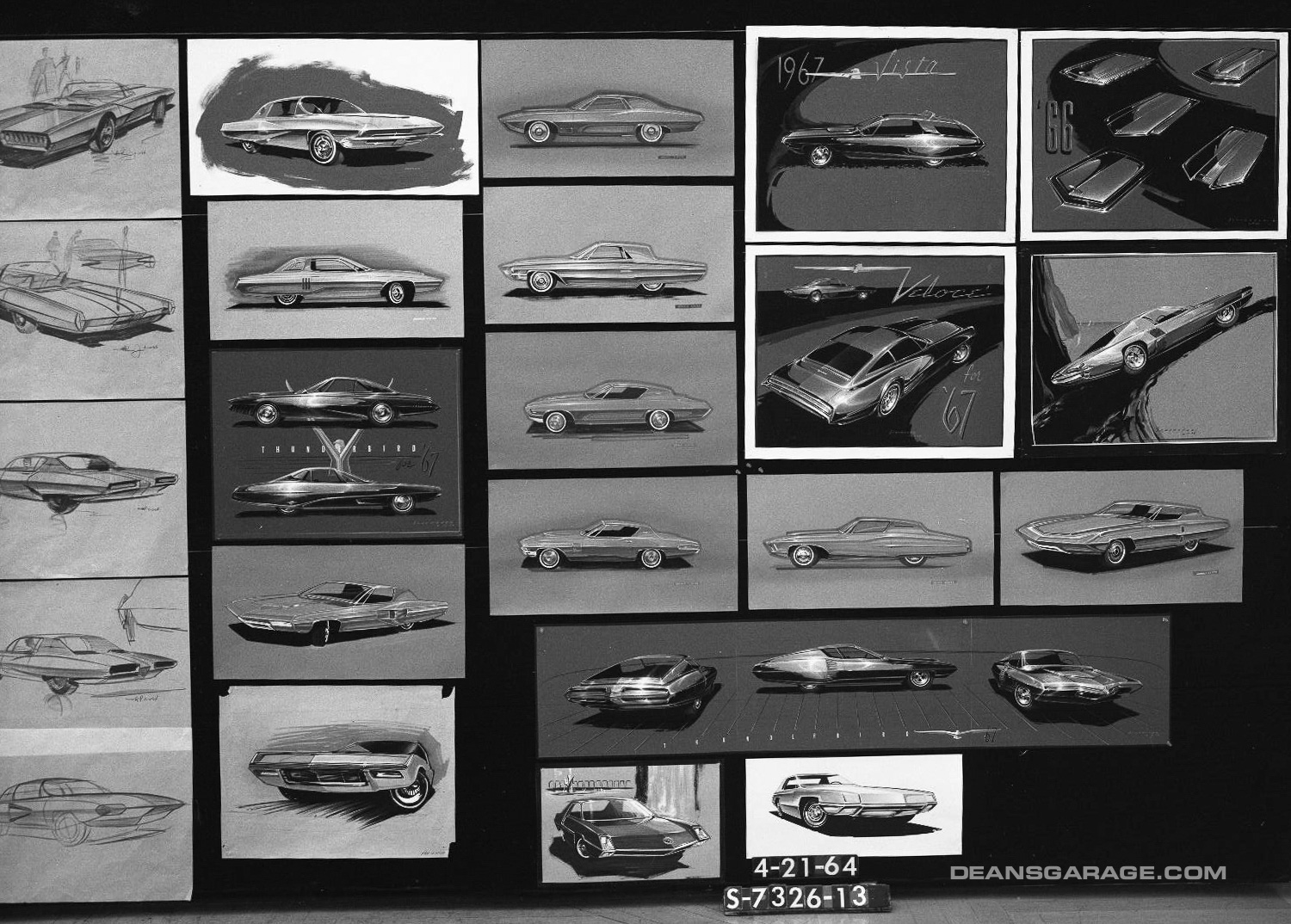
Sketches with a variety of proposed ’67 Thunderbird themes, April, 1964.
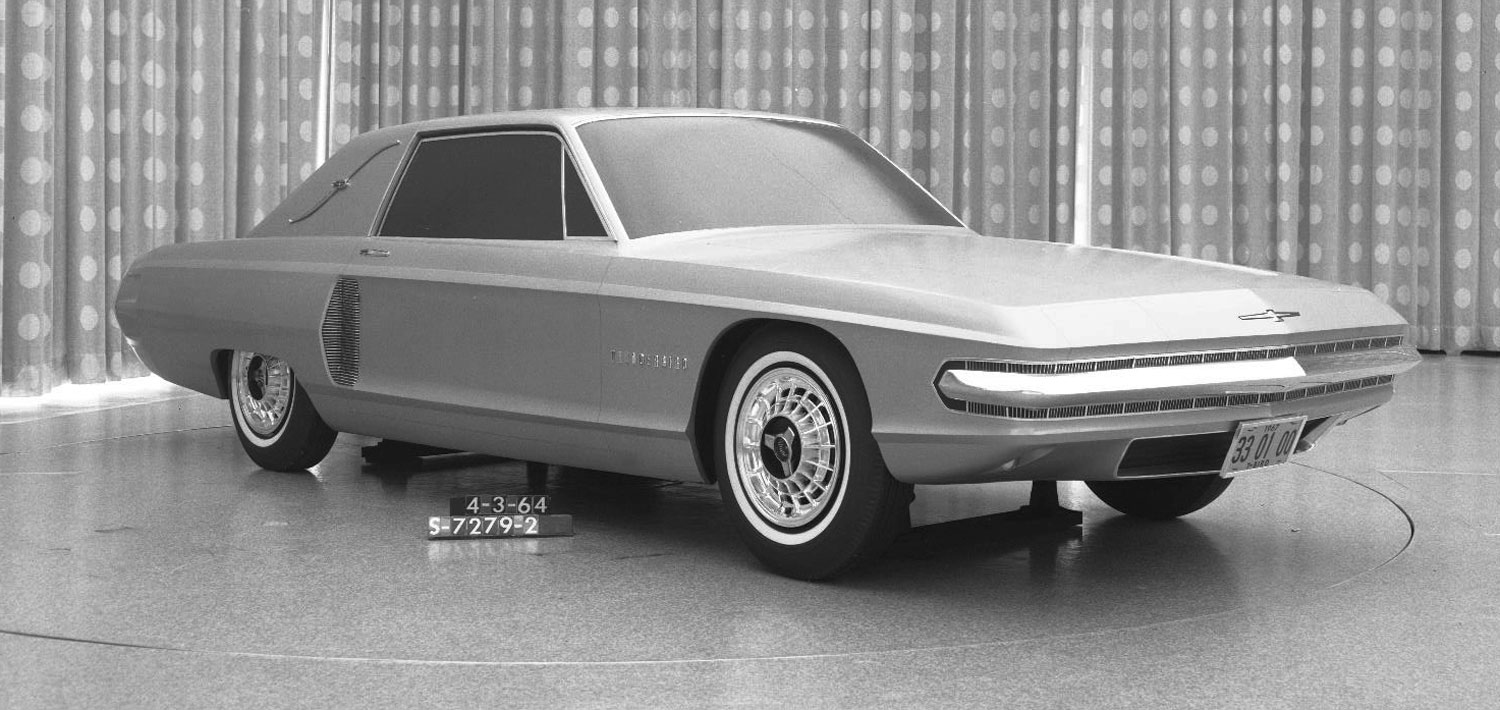

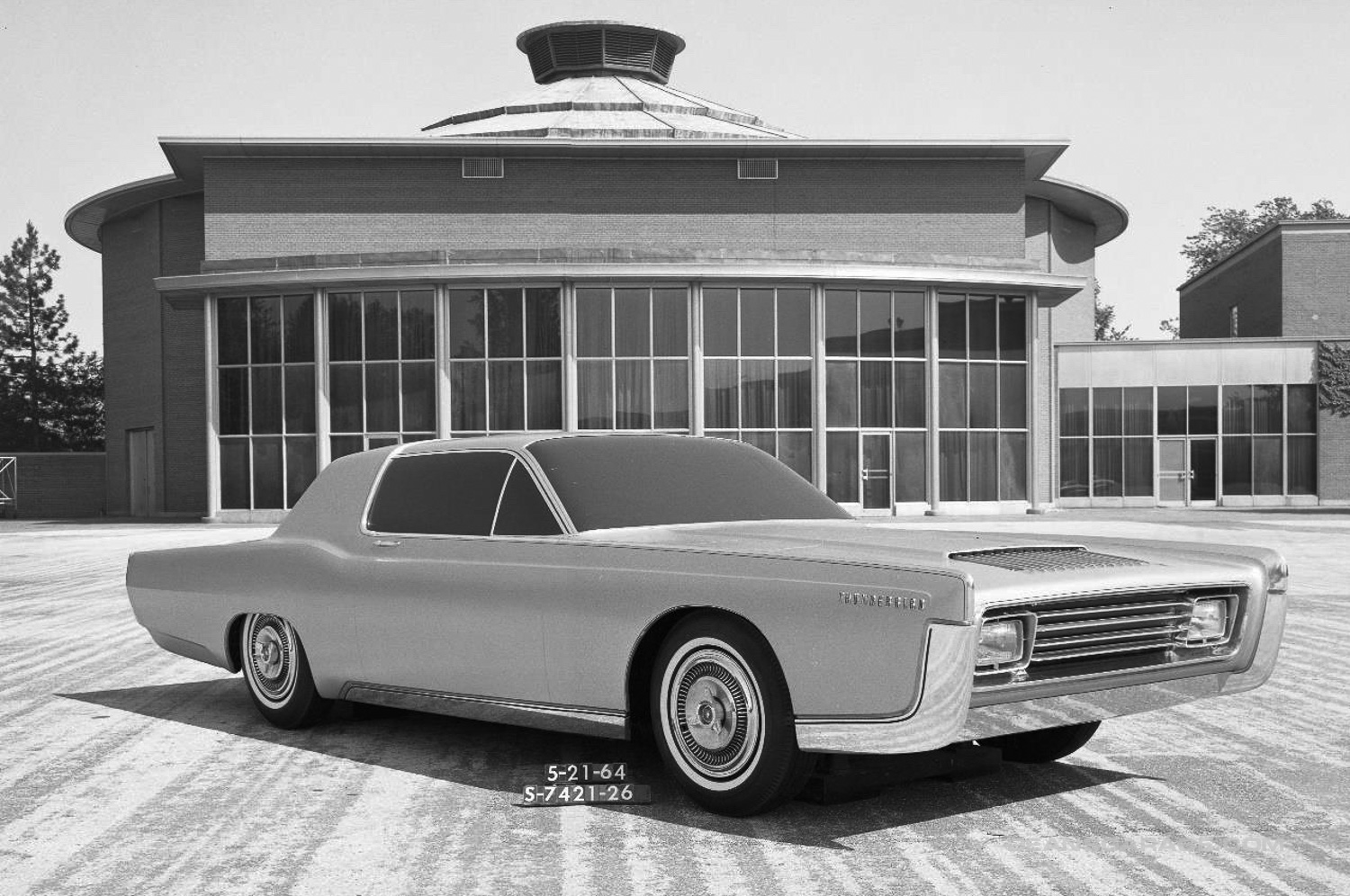
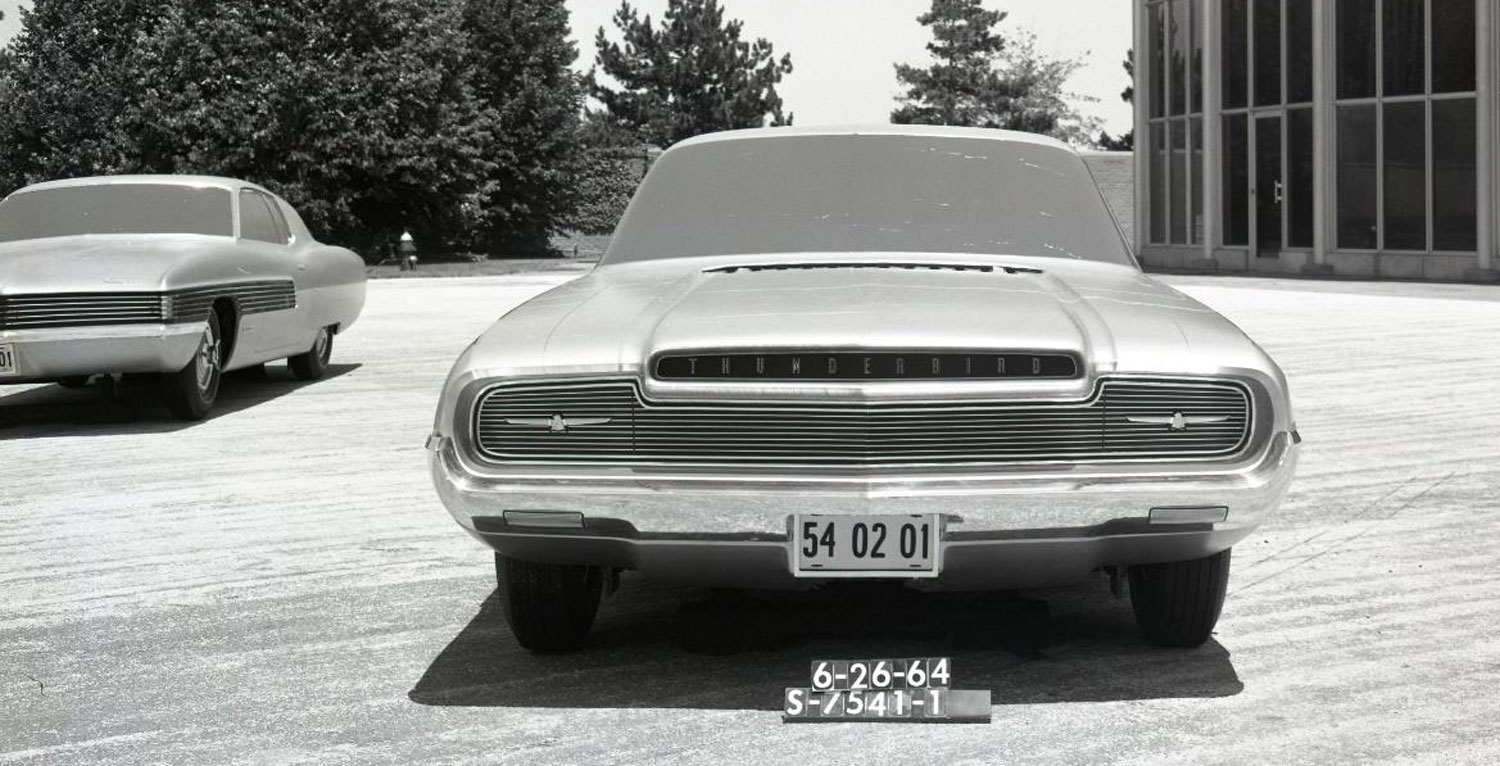
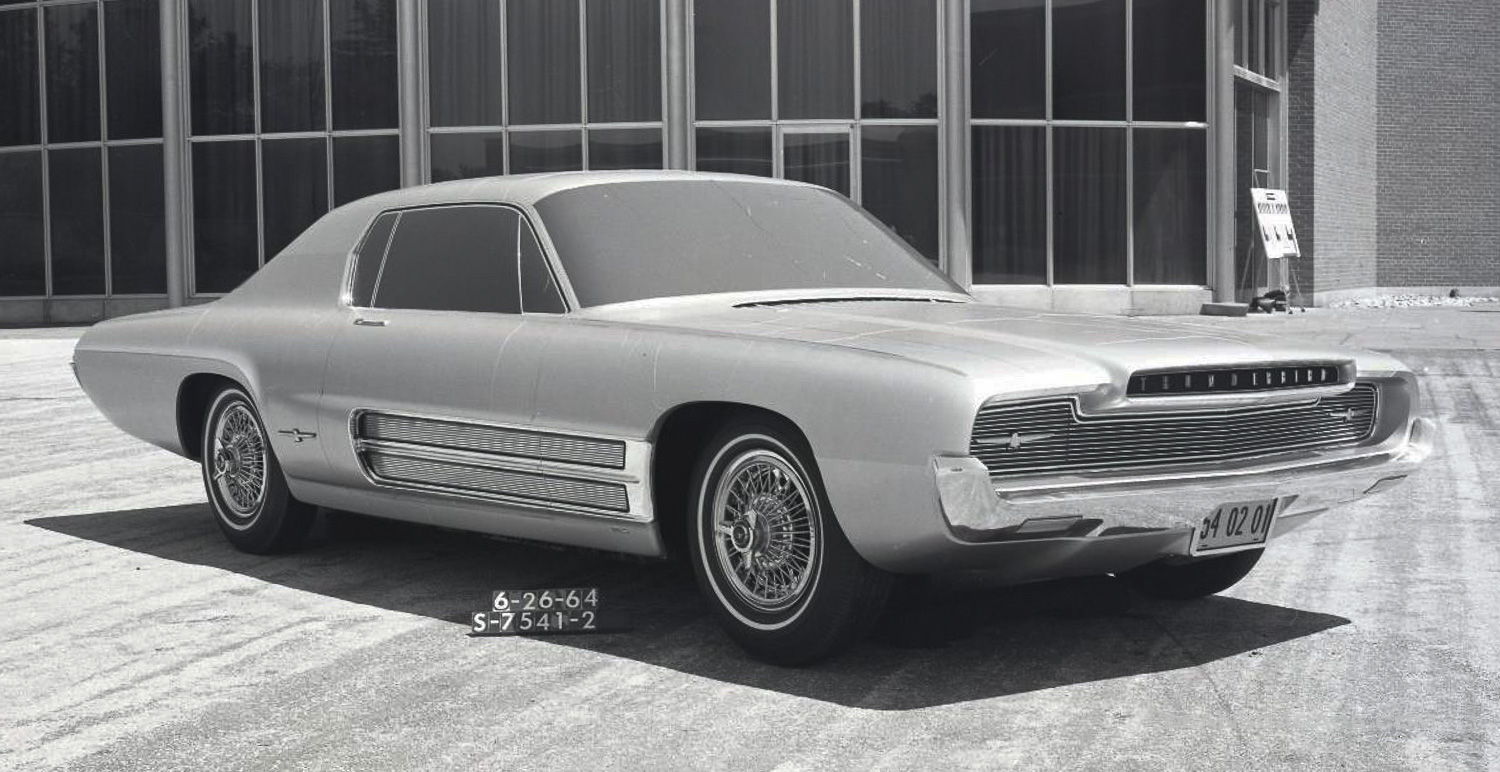
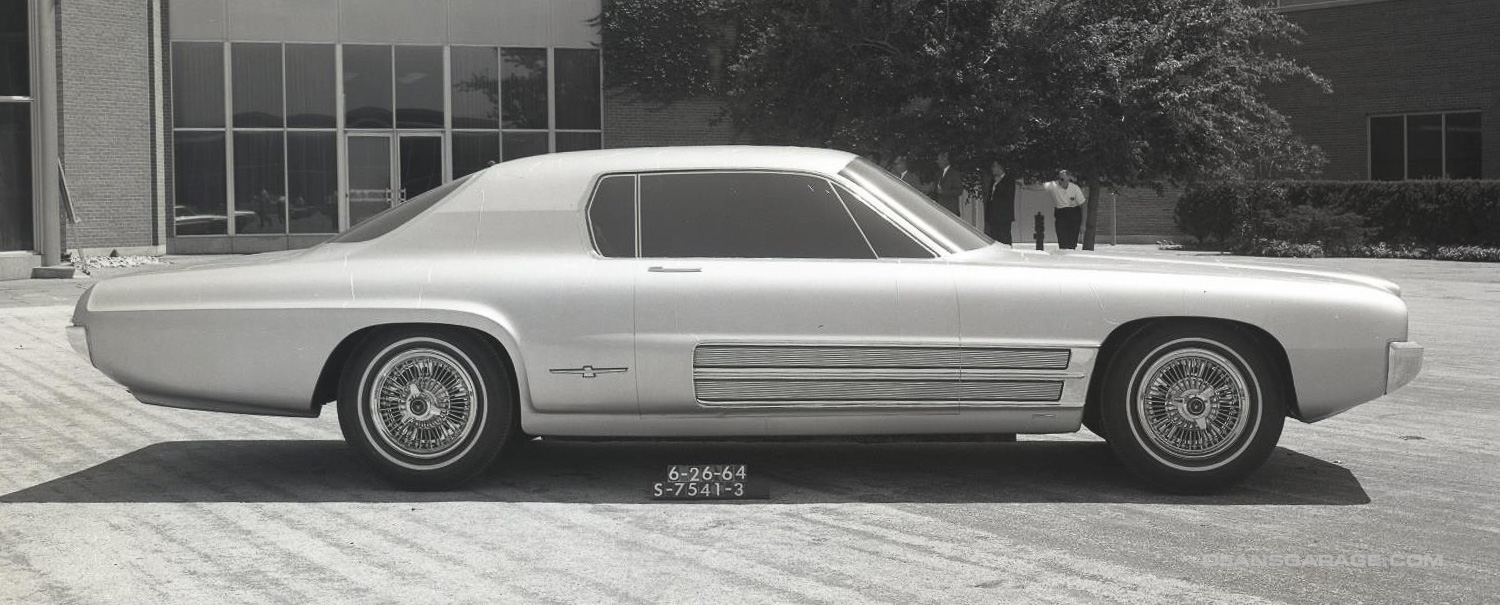
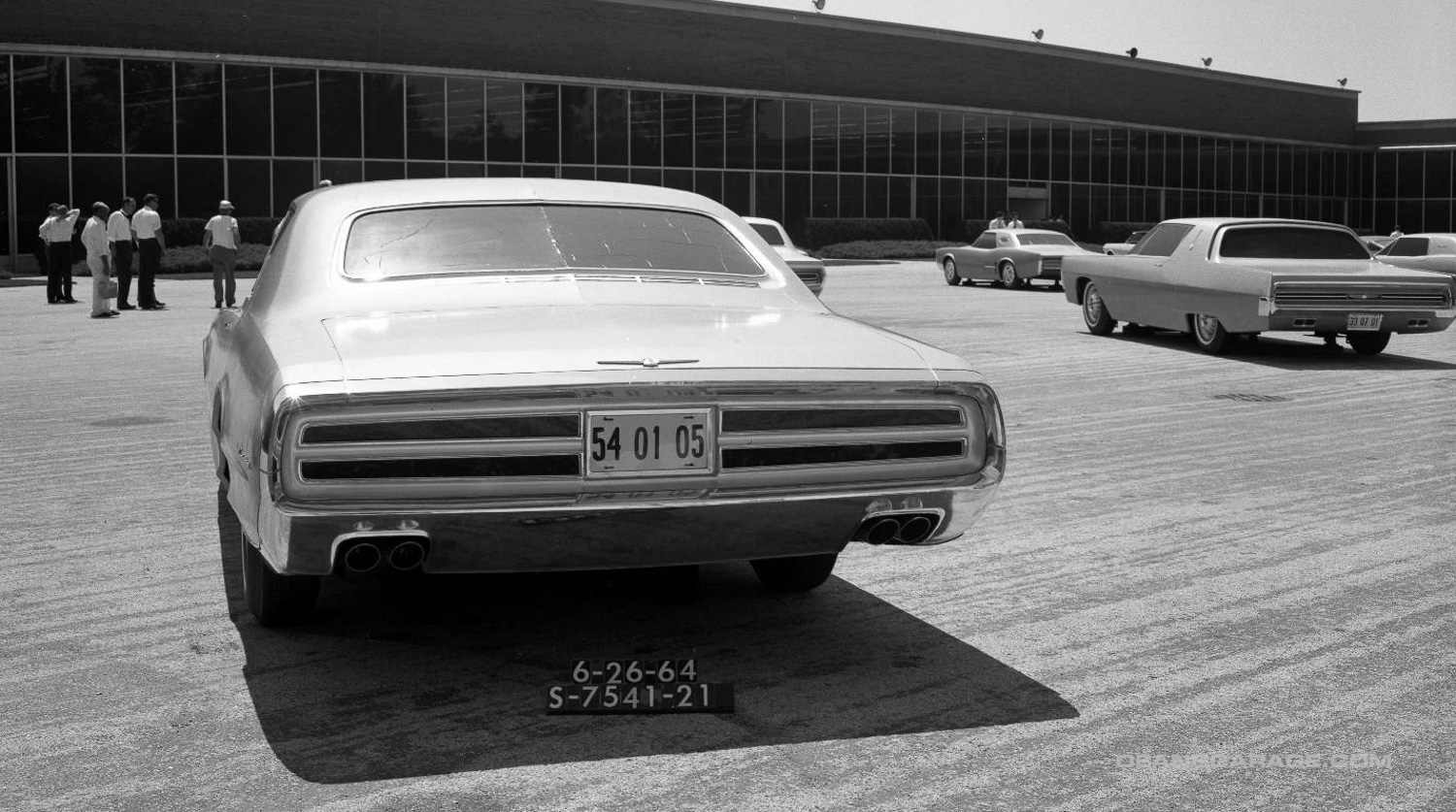
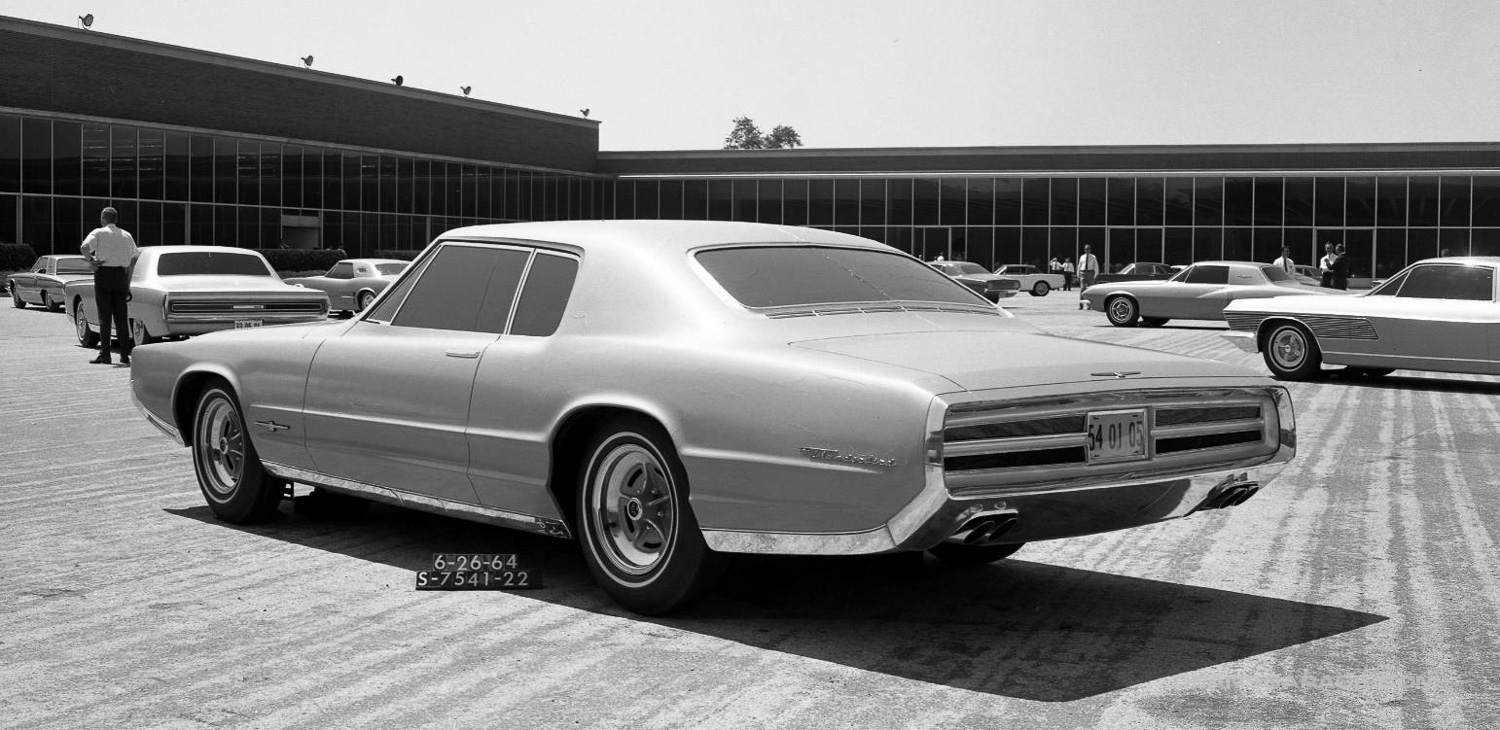
Design review on June 26,1964. One desired element Boyer mentioned was for less of a break between the quarter panel and C pillar. A smoother transition. In the end a small break was required so that there was a defined line for the base of a vinyl roof.
Several full width grilles and hidden headlights are shown.
Rear quarter panel kickup made it to production, as did flow through ventilation under the backlight, a popular ’64—’66 feature.
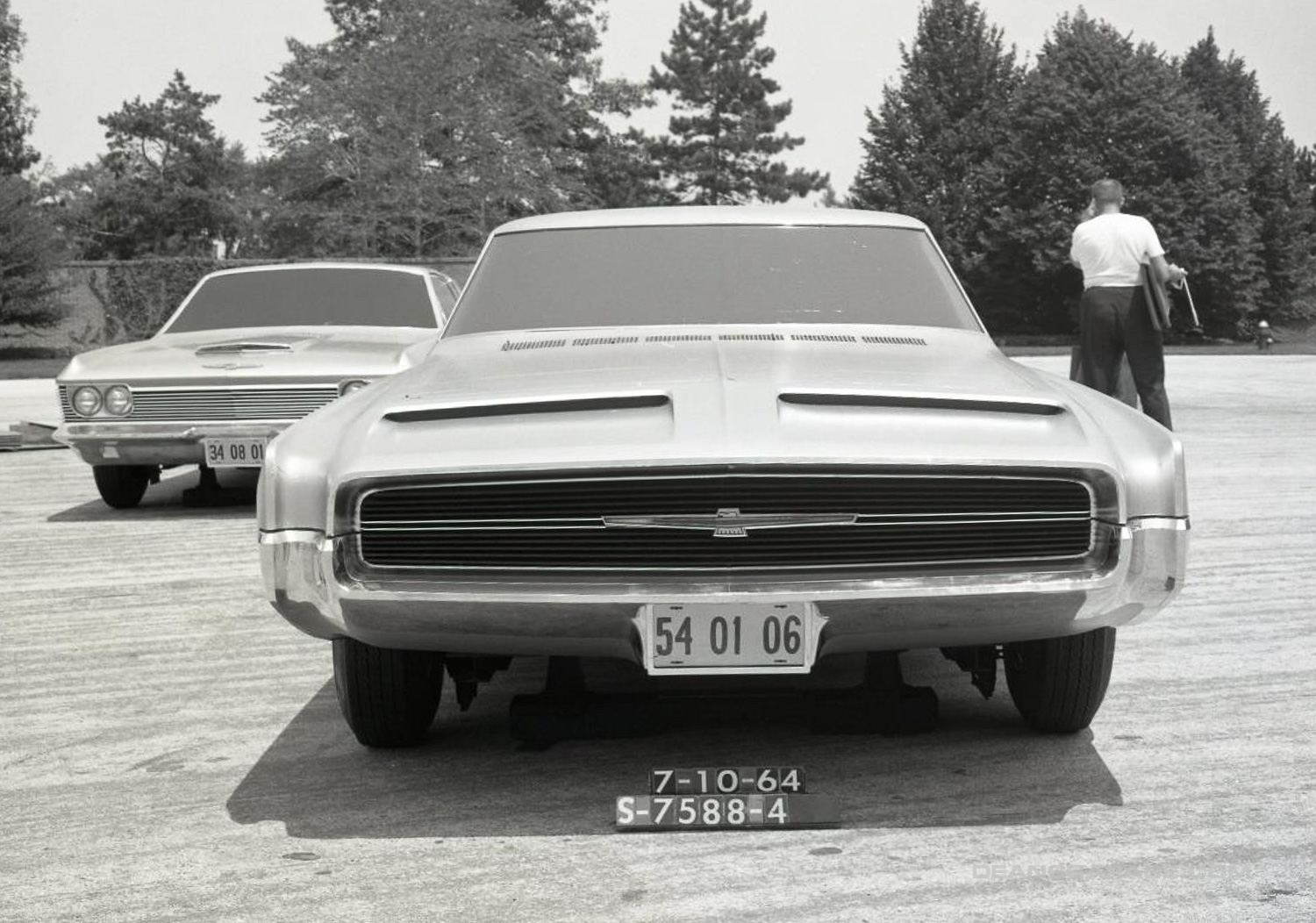
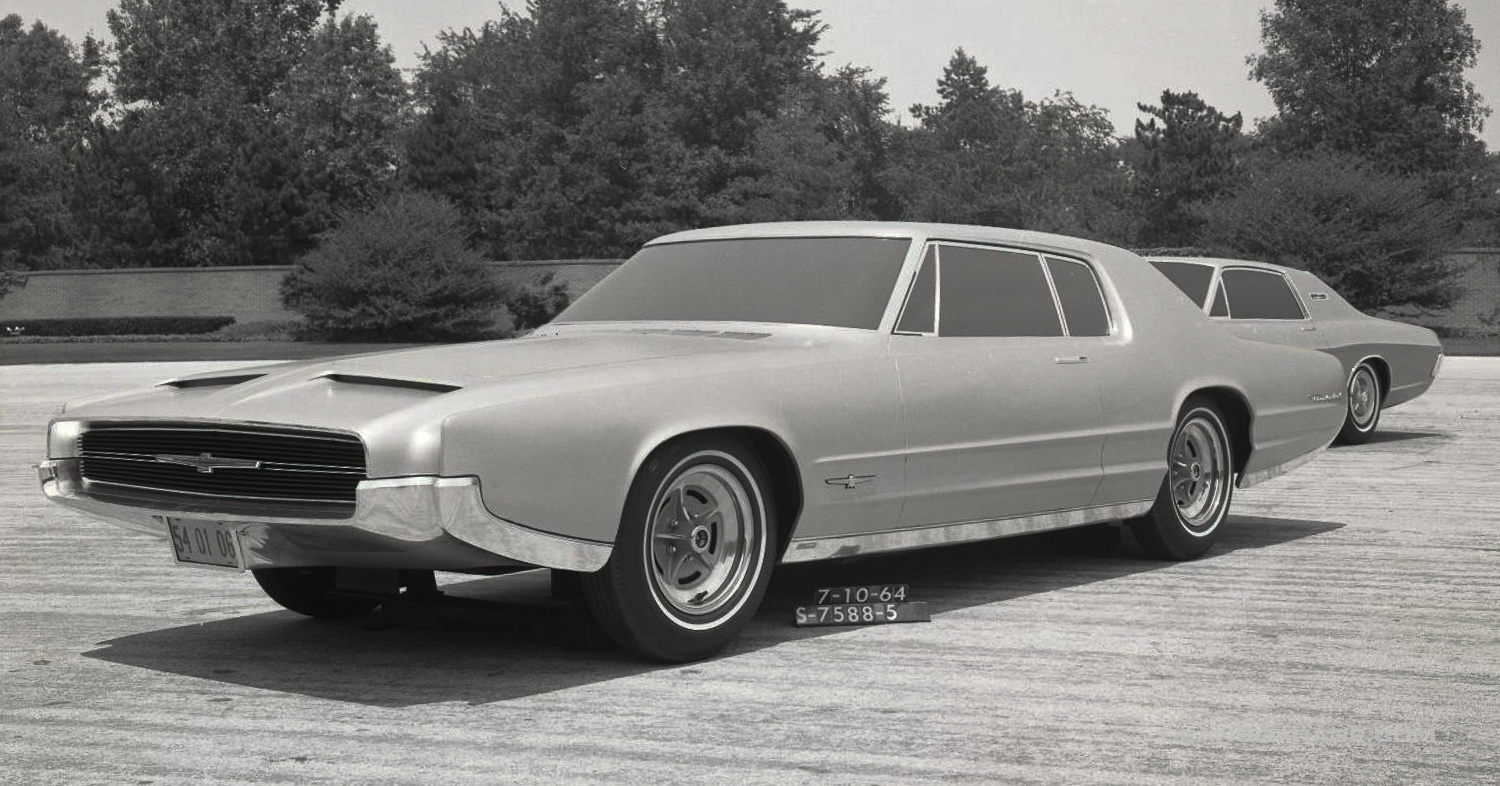
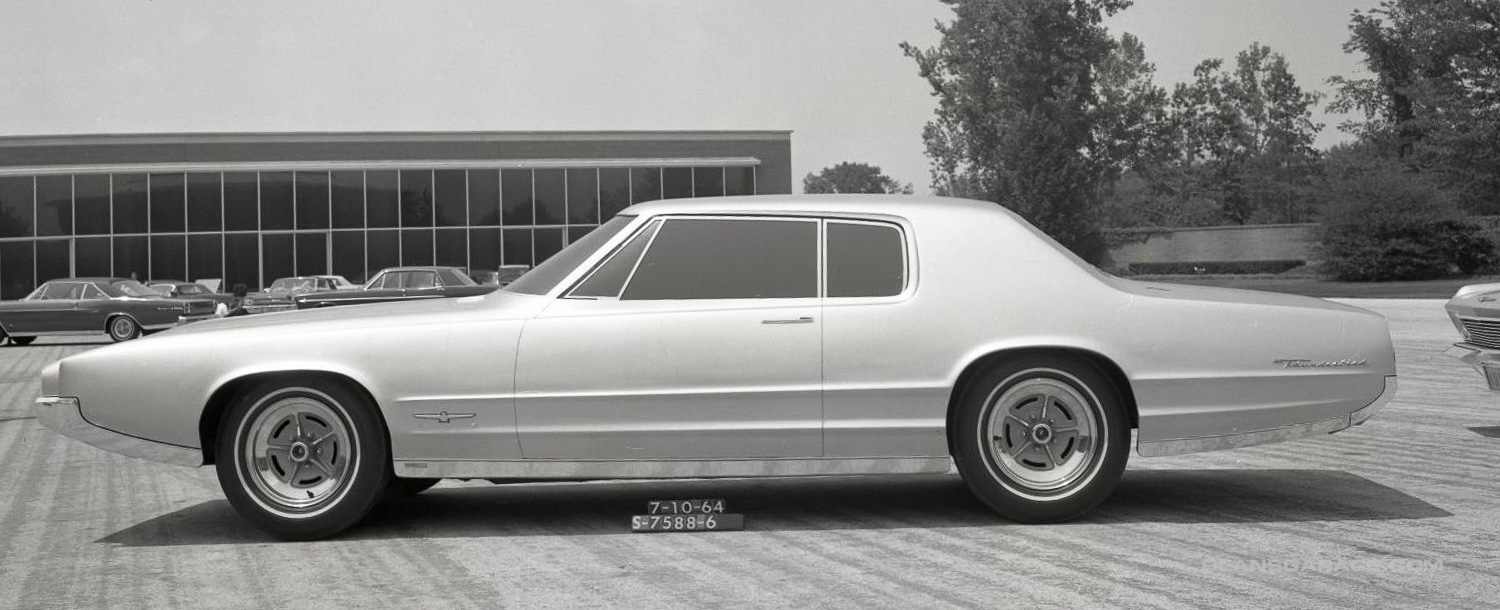
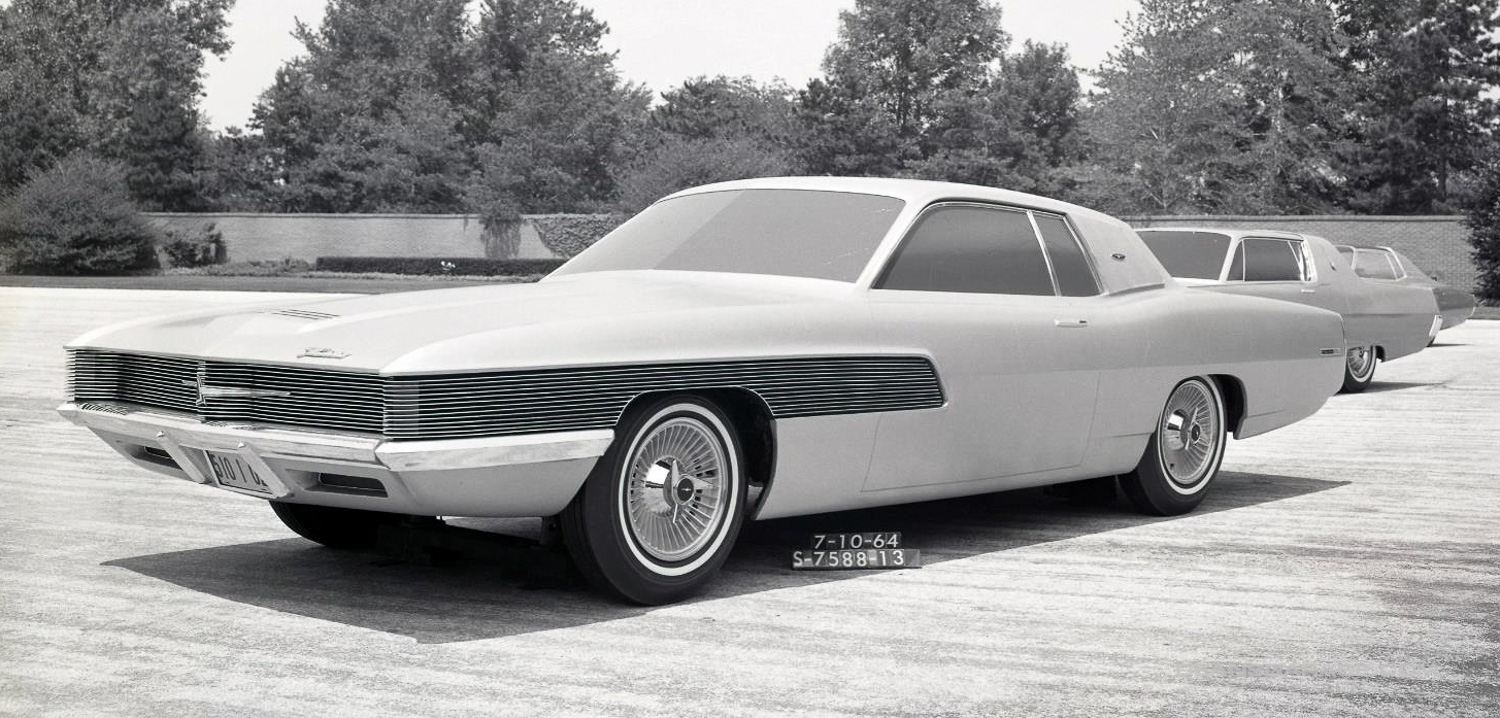
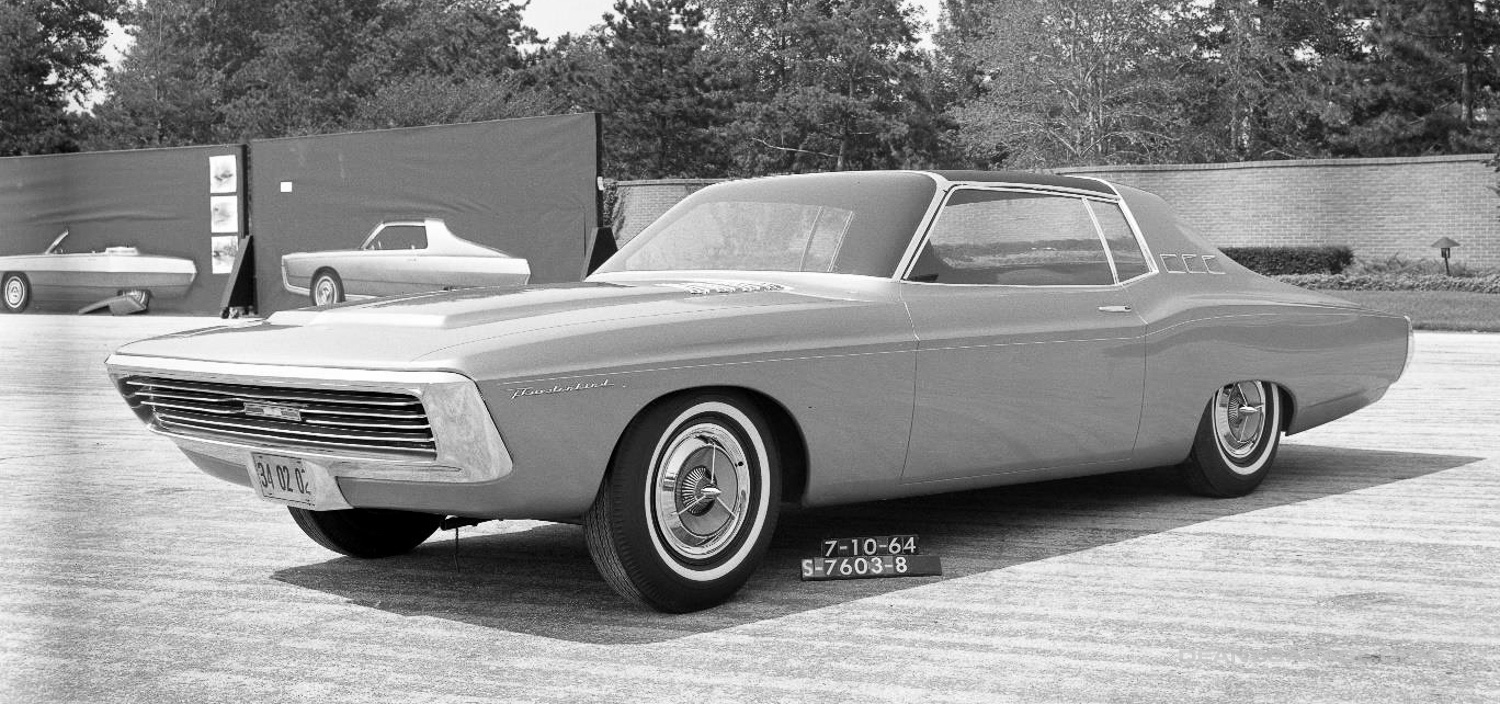
Design review two weeks later on July 10,1964. The first three clearly show the direction the design was taking.
At Iacocca’s direction three studios worked on the ’67 Thunderbird. Ford, Thunderbird, and Dave Ash’s previously mentioned Special Development Studio. This allowed management three different choices, or “flavors.” To quote Iacocca, “Chocolate, Vanilla, and Strawberry!” By this time Ash’s front end theme had gained managements preference.
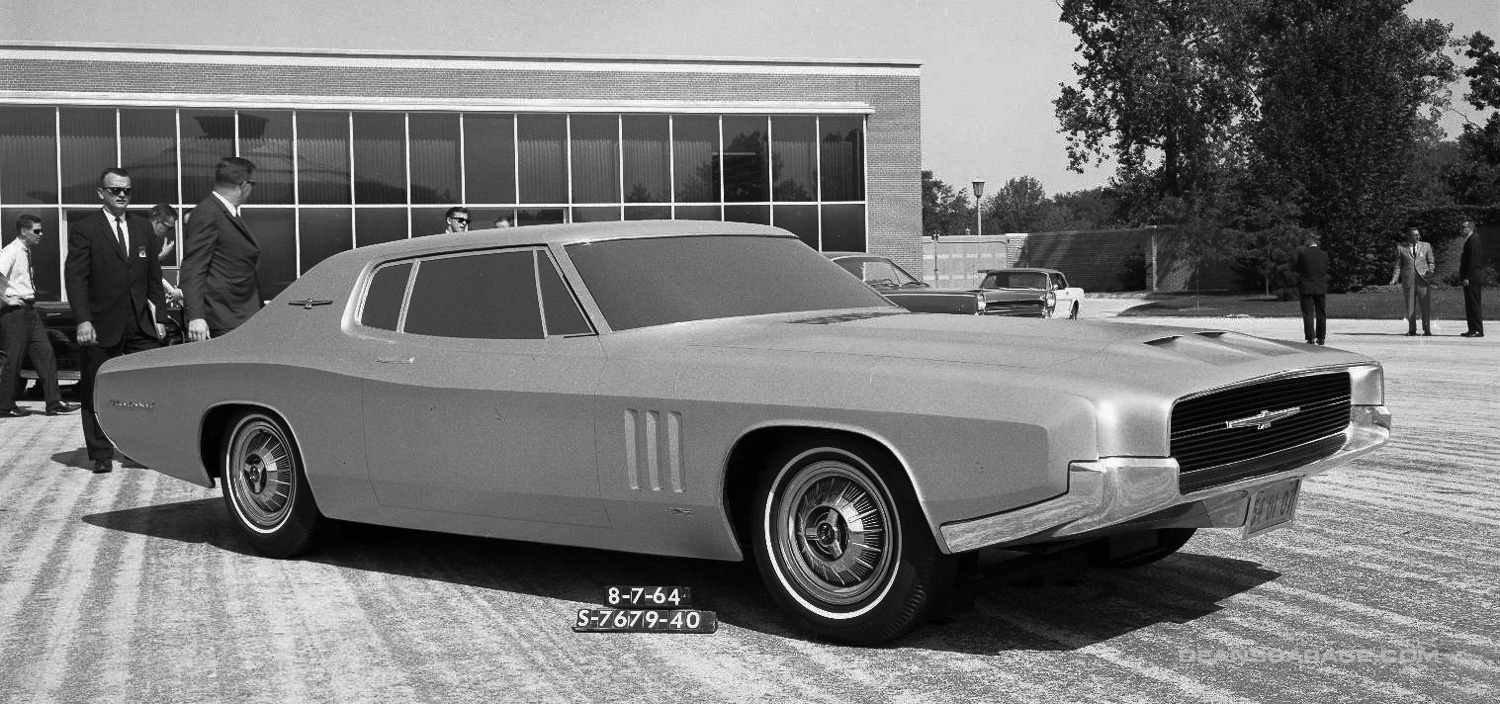
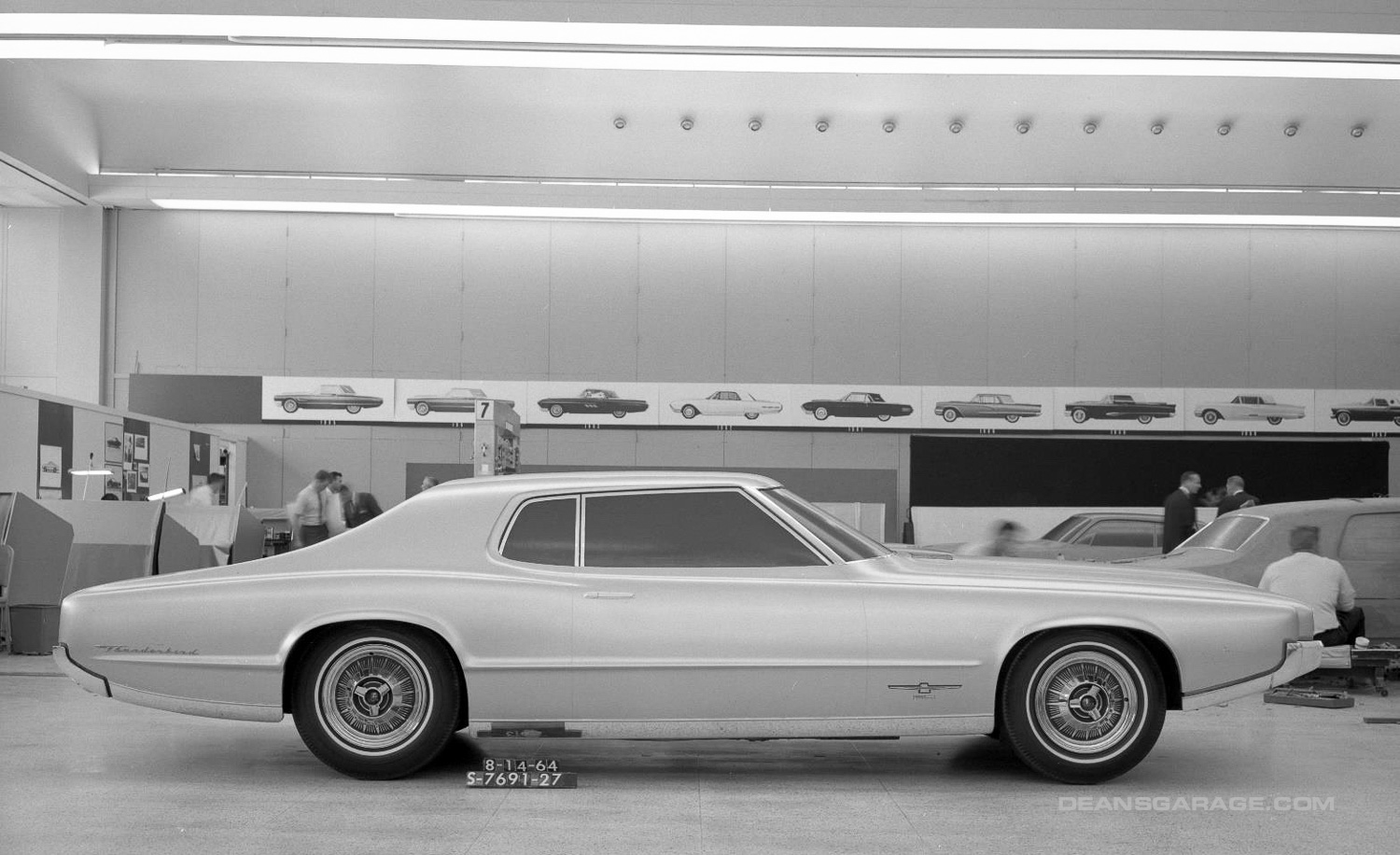
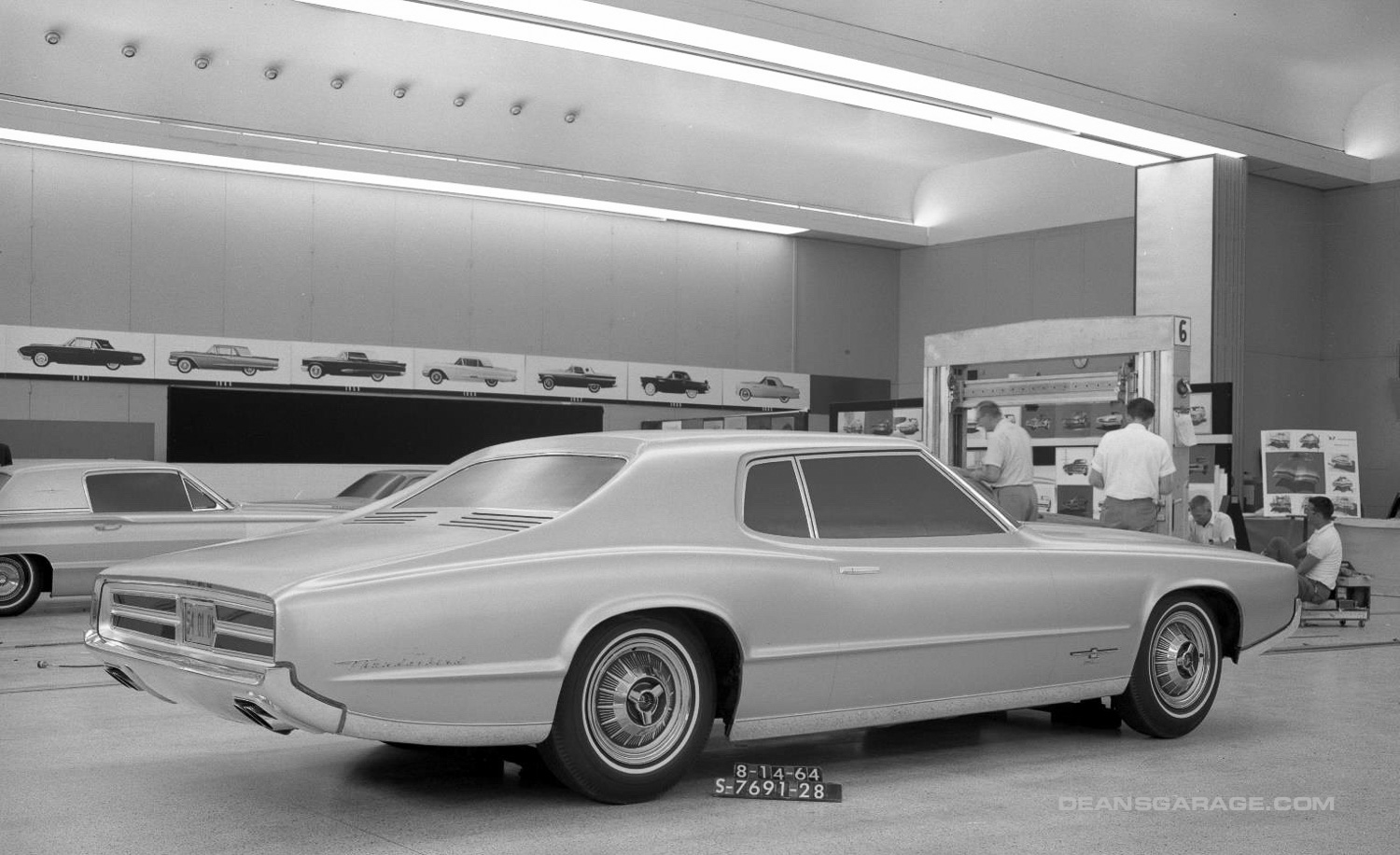
Further development by August. Manufacturing expressed concern regarding the smooth flow from the C pillar into the quarter panel as it would be a huge, single stamping with lots of wasted metal. It also meant for a long seam at the top of the C pillar which had to be lead blended to the roof stamping. Considering the heat that welding creates it’s hard to keep the seam smooth and prevent warping over such an extended surface.
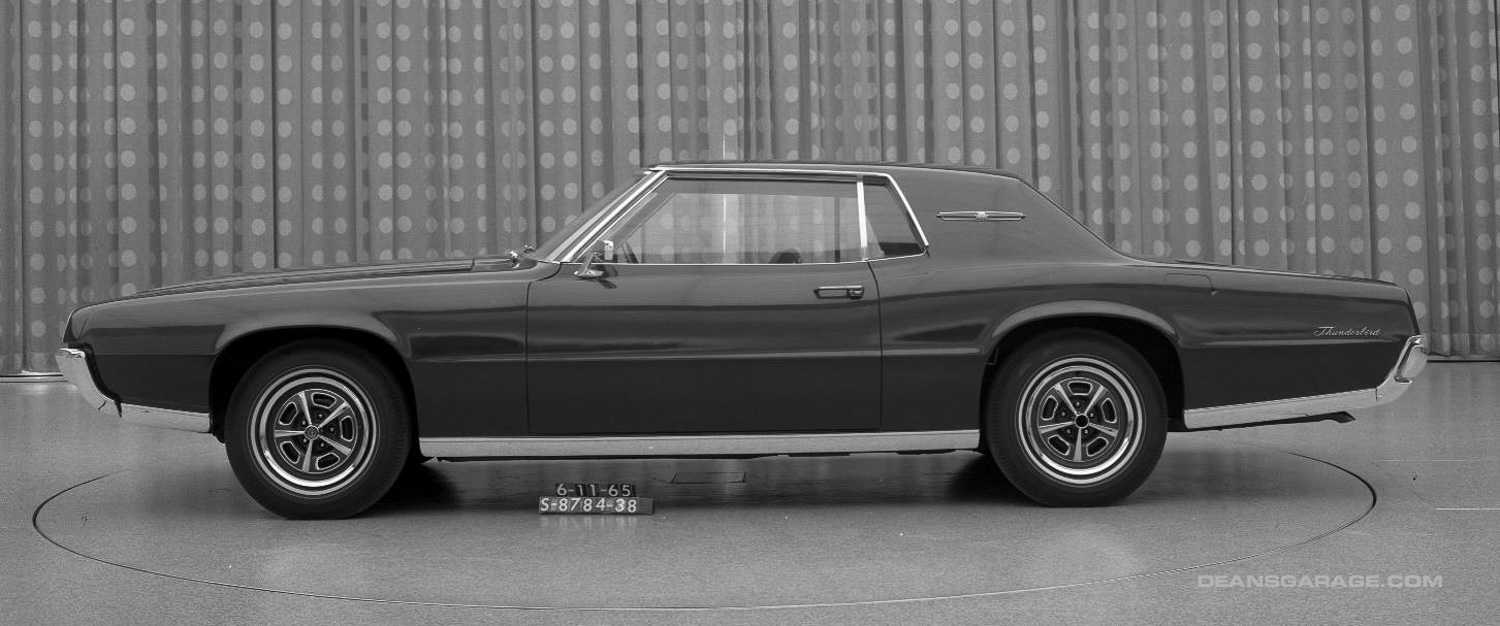
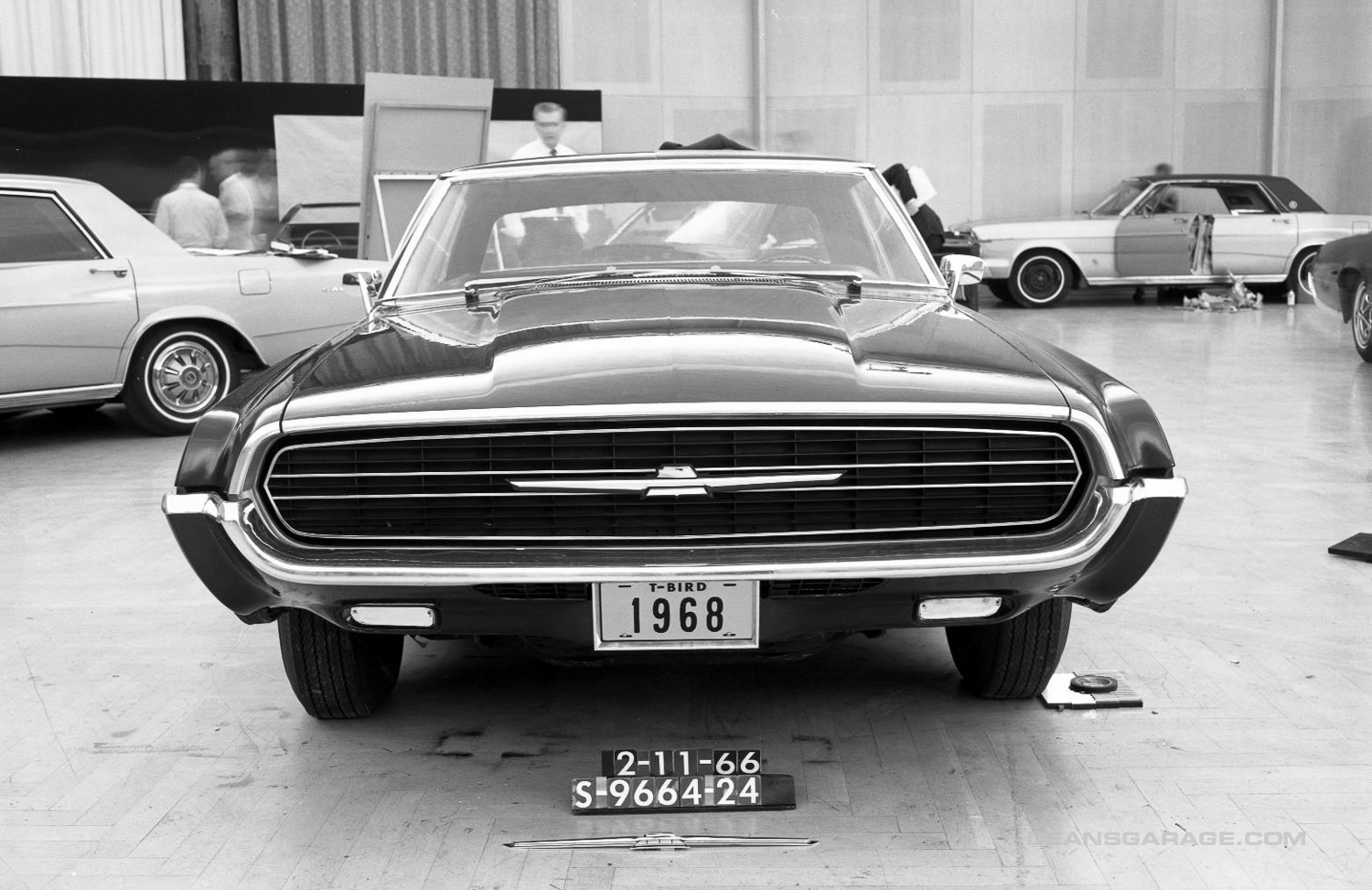
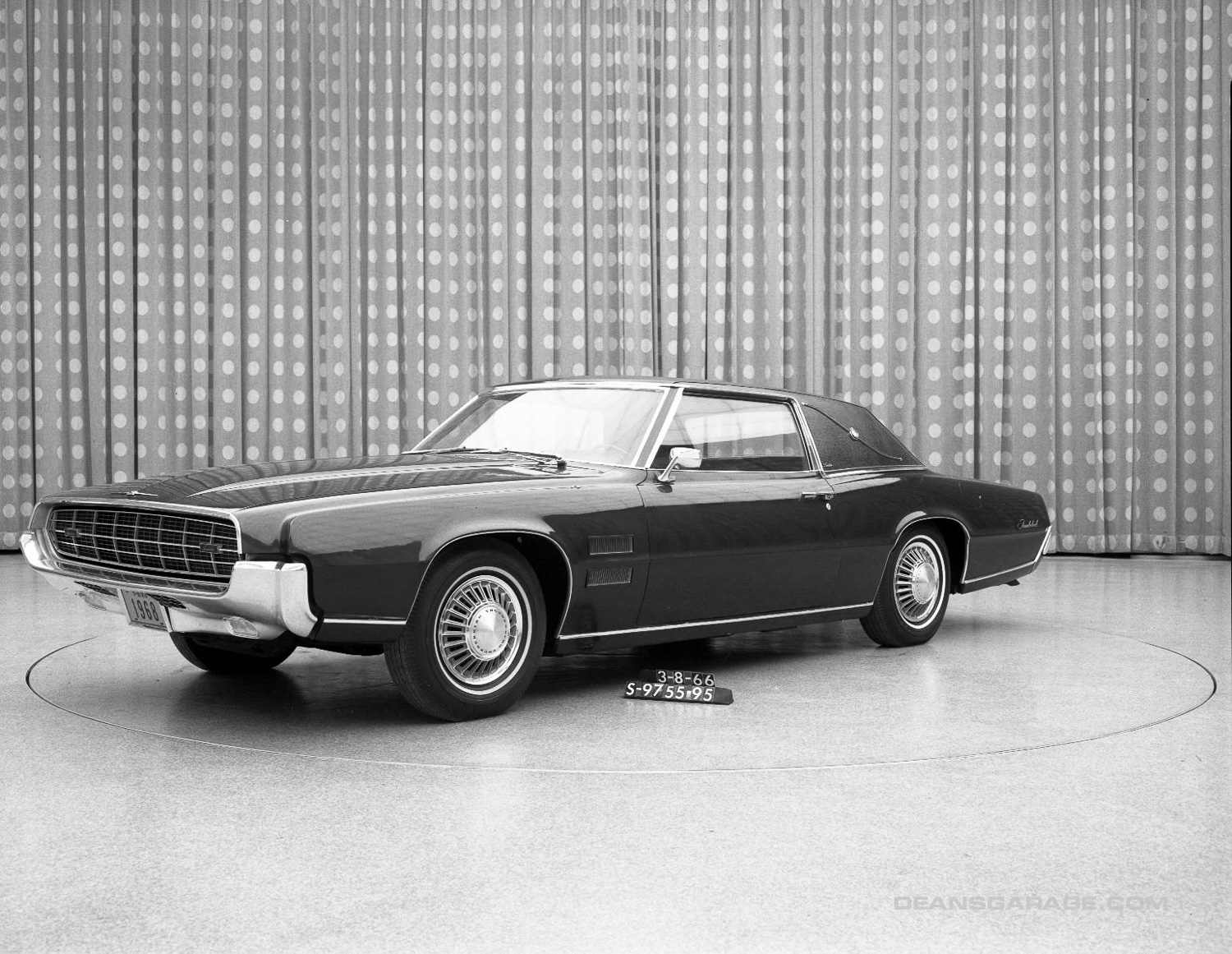
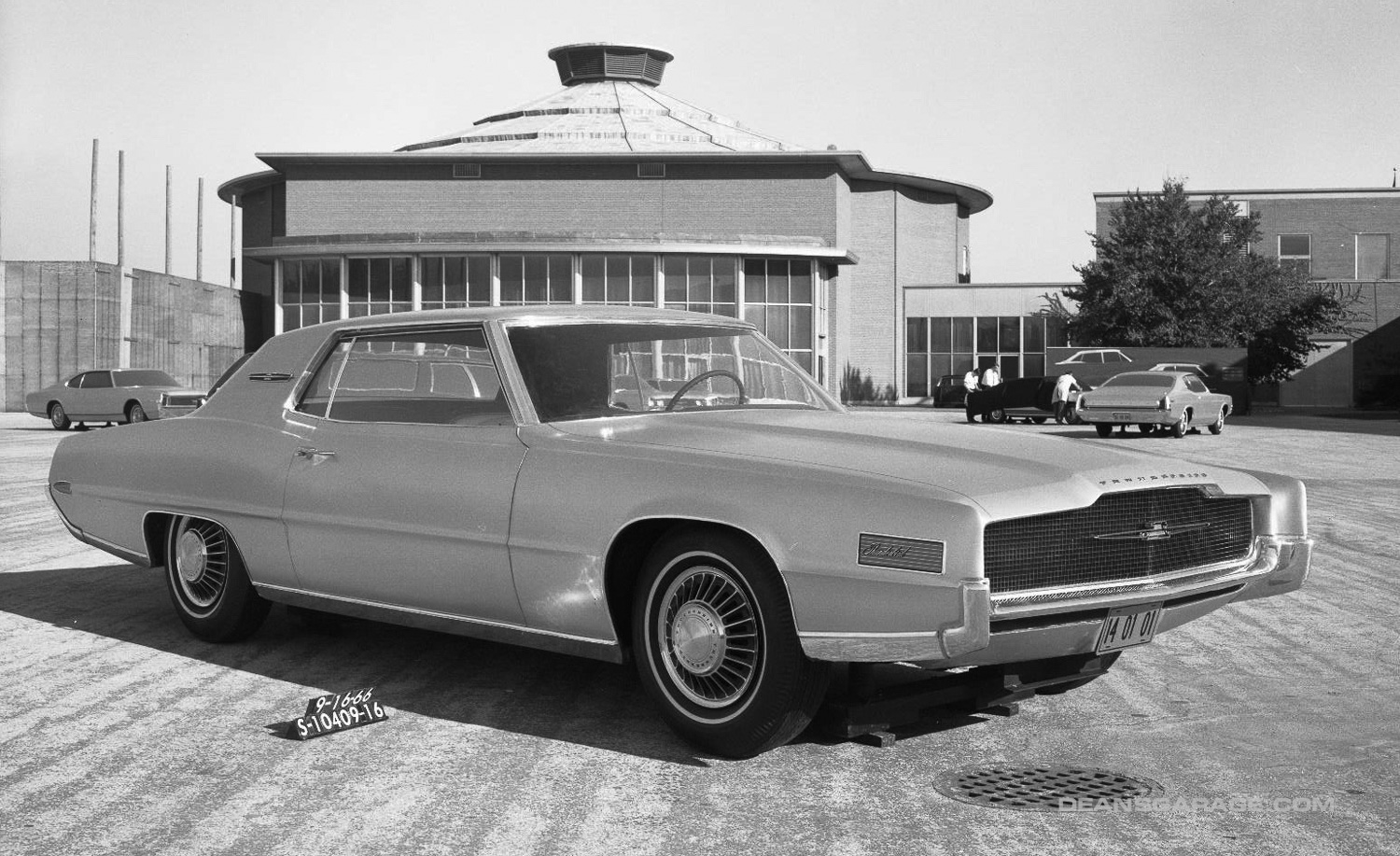
By June of ‘65 the design is nearly finished. A full year and a quarter ahead of it’s September 22, 1966 public introduction. Note the C pillar is not nearly as “fast” as previous clays. A more formal look.
A facelift proposal was being considered on this model dated February 11, 1966.
This grille pattern is similar to what was used on the ‘68s and ‘69s. All three model years offered a two door hardtop, a two door Landau and four door Landau. The four door Landau was popular and outsold the ’66 convertible by nearly two to one.
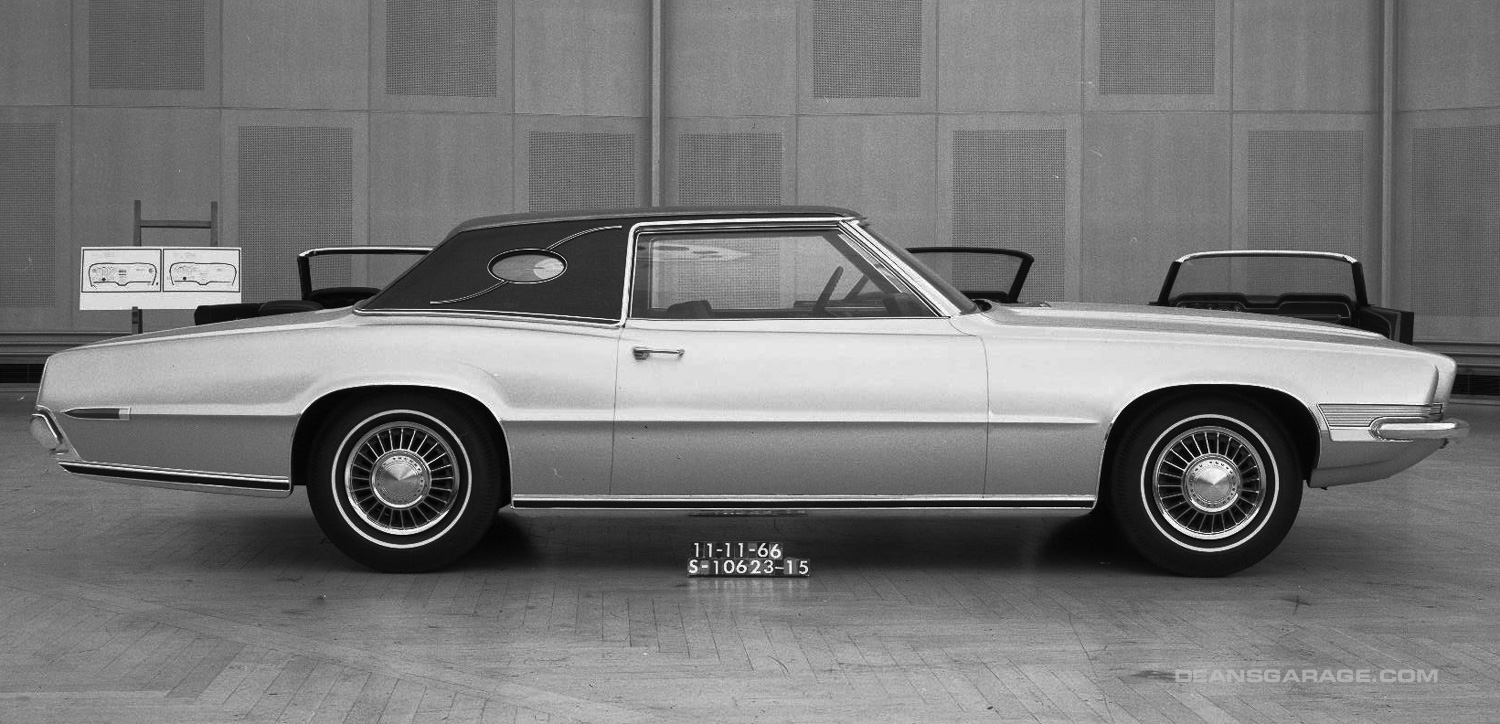
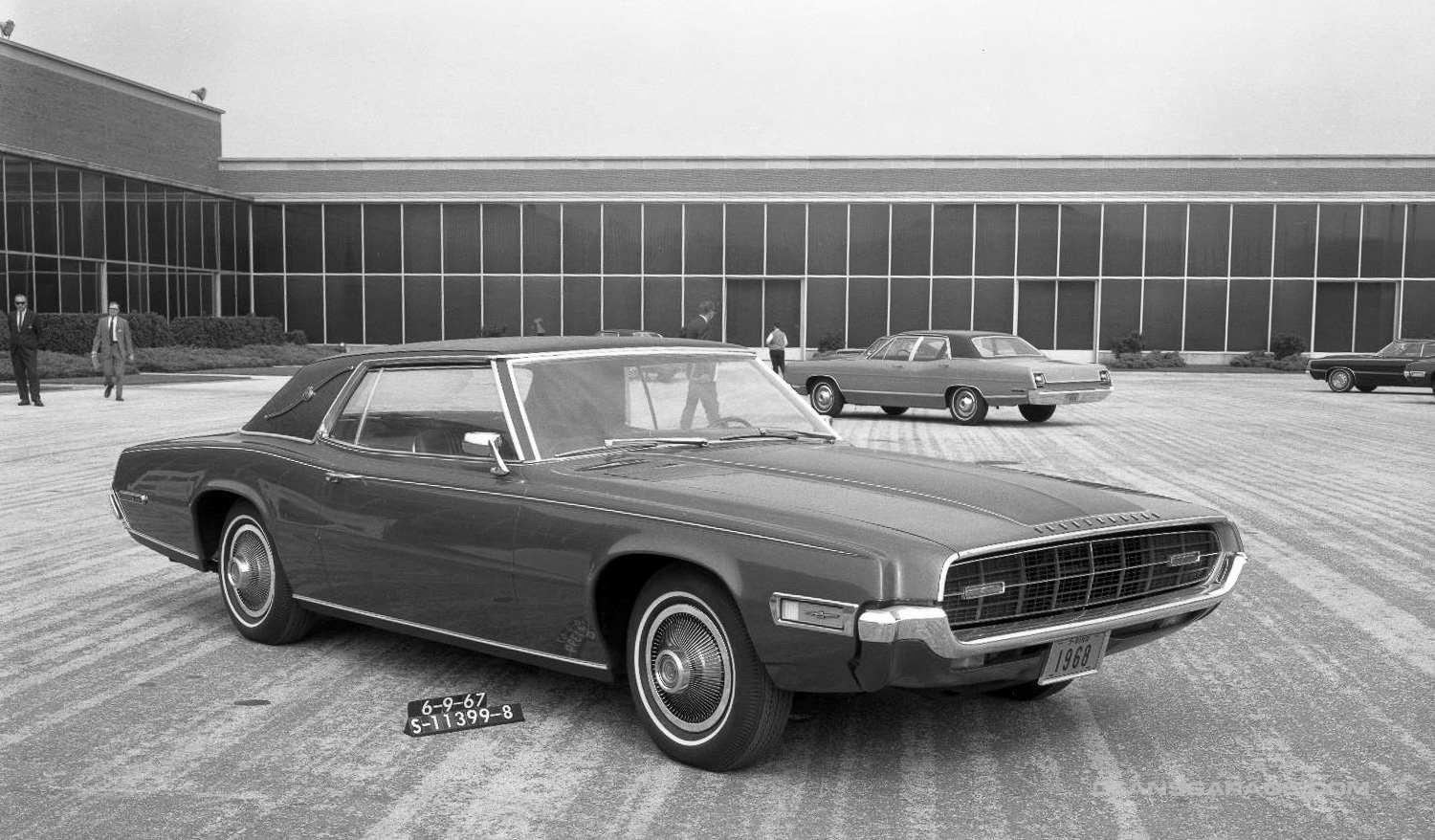
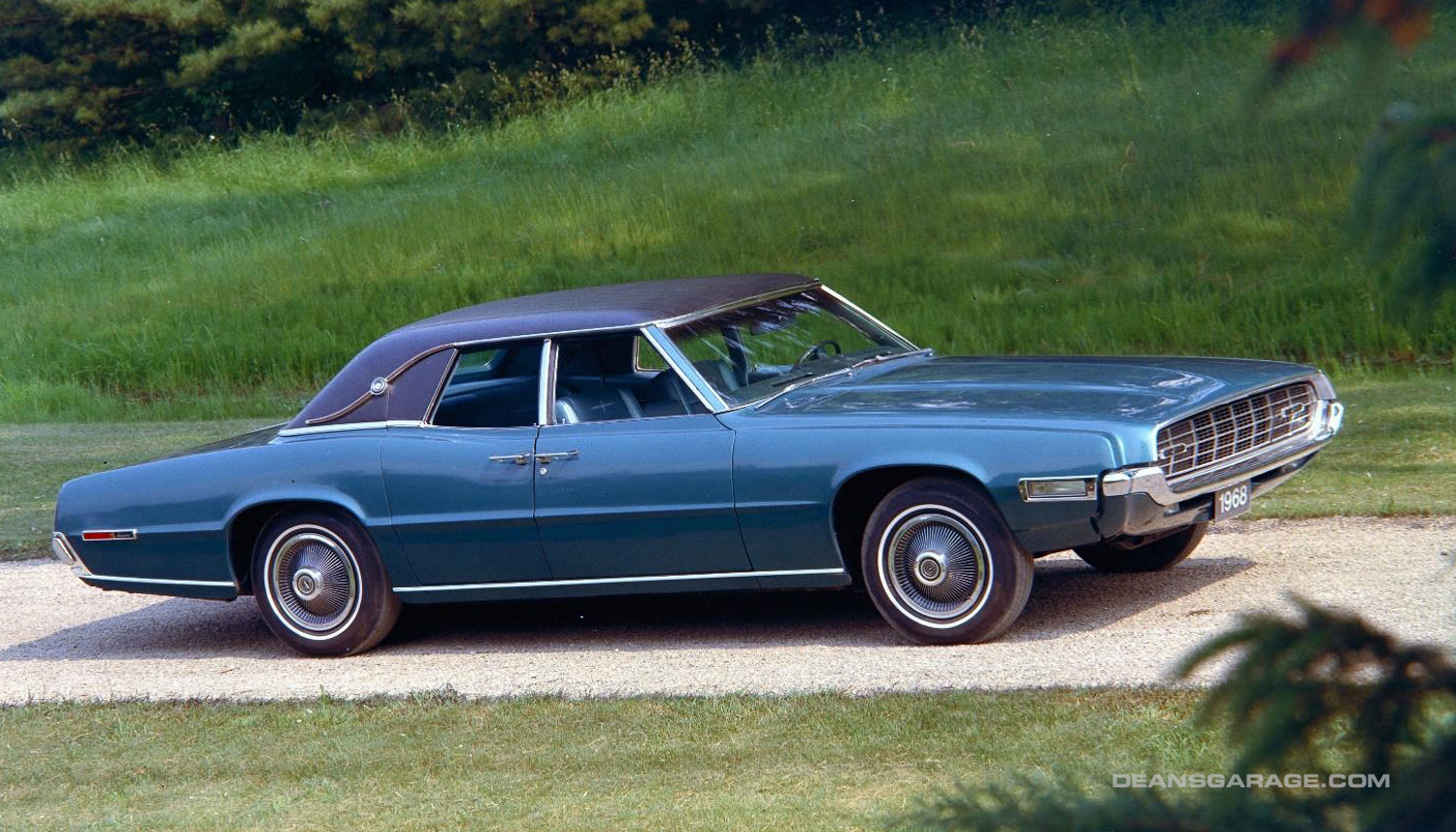
Historically, the last year of the three year Thunderbird production run incorporated the most design changes. While this only happened to a limited degree with the ‘69s, one can see some changes that were proposed. Including Iacocca’s favored opera windows.
The finished product in four door Landau trim. While perhaps not sporty in terms of previous Thunderbirds, but still an attractive and unique looking design. The emphasis on luxury continued till the Thunderbird was downsized with the ’77 model year.
Like him or loath him, Lee Iacocca played a highly significant role in the direction of Ford styling from the early sixties which created the Mustang, the Total Performance promotion, Continental Mark III, Pinto, Marquis, Cougar, Maverick, Fairmont ,and Granada. All highly successful programs for Ford.
Iacocca had great intuition and a knack for picking the right product at the right time. The ’67 Thunderbird proves to many that nobody can bat 1000.

If H.F.II had a reason to keep Iacocca out of the top Ford operational slot by setting up the Executive Committee with ArJay Miller in charge (1963-1968) followed by “Bunkie” Knudsen, perhaps the revision of the “mission” of the Thunderbird from sporty personal luxury “halo” car to a more formal luxury car for 1967 was a factor, competition notwithstanding. One did not see four-door Rivieras, four-door Toronados or even four-door Eldorados in the 1960s. Why undermine the sales of Lincolns with a four-door T-Bird ? (My in-laws had a 1970 four-door Thunderbird and a Cadillac: The T-Bird was fully-equipped and was the daily driver to work at the R.C.A. plant in Indianapolis, where both were in senior management.) I think the problem with the 1967-1971 Thunderbirds was that they were too much like regular maxxed-out Fords on the showroom floor, especially the four-doors. In the position occupied by the 1958-1966 Thunderbirds in my mind, they were NOT six-passenger sedans ! The 1967-1971 Thunderbirds forever changed what a T-Bird was supposed to be. Image positions in the minds of consumers are very fragile. (It may be why Chevrolet nixed the four-door Corvette in the mid-1960s. Will G.M. make a mistake by putting the Corvette name on an SUV or sedan in the next few years ?)
Love this stuff!
Thanks… look forward to every “issue”!
They are all pretty amazing, thanks for doing this piece it is fun to see all the proposals…
I owned a ‘68 T-Bird 4dr. Landau
and it was a fully loaded luxury vehicle equipped with a 429 4bbl. The car gracefully held its own in performance and handling, and interior comfort with a big car ride. It was a refreshing break-thru design that showed that a “formal and heavy-duty” T-Bird could stand out in the competitive luxury car market. However, it did destroy the appearance and collectible design of the Ford sports car that hailed in prior models with my personnel choice, the ‘57 T-Bird.
James Duvall just echoed my sentiments 100%. This torturous prosecution of one of the most successful cars in Ford’s history could only have been shadowed by the Edsel. As Mr. Duvall pointed out, it was not only a marketing flop in its own field, and impacted its kindred Ford competition, but forever sullied the Thunderbird name in the public’s mind with big, clumsy, fully-optioned, 4-door vacuum cleaners.
Detroit automakers should take a lesson from Hollywood’s outstanding comedians. Jerry Seinfeld (“Seinfeld”) and Jack Gleason (“The Honeymooners”) were two brilliant creators who had the foresight to conclude their TV series while they were at the peak of viewer popularity, thereby ensuring they would forever remain popular, and not ‘dragged down’ by reruns of later episodes after the writers had long run out of ideas.
Ford utilized this successfully when resurrecting the Thunderbird nameplate in 2002. Unfortunately, production wasn’t enough to overcome the stigma the car acquired over the previous three decades. Nevertheless, the line was forever saved for posterity by not tarnishing the image with later 4-doors, wagons, SUVs and other flotsam.
Think if they had applied this philosophy when the last 1970 Cougar was being envisioned, when Mercury showrooms became furniture showrooms of gas-powered end tables and night stands. Or when the cutting-edge 1965 Riviera’s reputation was superseded by Sherman tanks dressed in drag.
Taking the Thunderbird fantasy a few more dimensions into the sideways past, I would have like to have seen the 1957 model continue into the ’60s with only mild trim variations, then have it undergo a restyle that would have resulted in the Mustang, right alongside the Corvette Sting Ray. Forget the Mustang hardtop and just build the convertible and the 2+2.
Meanwhile, the 1958 Thunderbird would have been introduced on September 4, 1957, as the much-heralded new Edsel to rave reviews that would have left showrooms bare.
Why is hindsight always 20-20 vision?
PS: Hopefully, Chevrolet will not continue its downward spiral with the Corvette by introducing a 4-door or a wagon. Heaven forbid… I heard Ford was making a 4-door Mustang, then I saw one parked at the library. Hasn’t the Mustang image been pummeled enough with bad marketing mistakes since 1971?
Some people never learn…
Great article. May be FORD should build a scaled down verison of model
S-7-64 S7369-10 and make it a hot hybrid sport car ( Bring back the “T” bird mark ) Shock the world LOL
It seems that, through all the development, they never could get loose from that protruding snout growing between the front fenders. That “cue” doomed anything else they tried to do. Hard to believe the guys who designed the late 60s Mustang also gave birth to these insults to the T-Bird marque. It all led, of course, to the gussied-up Torino with a roof bar, mass market Thunderbird that greatly reduced price and increased sales. Every working stiff could then boast he drove a Thunderbird. The later Aero Bird and BMW 507 tribute cars tried to redeem the brand, as did the two-seater revival, but they weren’t enough. Maybe a T-BEV-Bird will be.
Seeing the “Auto World Store” e-mail of today, Friday, 01/12/2024, I see where AMT is releasing a reissue of the 1963 Mustang II 1/25th-scale model. The artwork on the box top shows the prior inspiration for the front end treatment of the 1967 Thunderbird, as indicated by the 06/10/1964 “Chocolate” design. This is a great article.
This is great, thanks for all your research. Please, keep them coming.
They lost the recipe, clearly. Elsewhere on the web, there are pictures circulating of a clay mockup Toronado trimmed out as a Thunderbird dating from 1964, the product of a high level leak from GM.
While much is different from the final product, the “Fordonado” was close enough to line up in a design review with the proposals shown here. It was evidence GM had drawn a bead on a market Ford largely owned. The news was a factor that put Ford at a personal lux crossroads-continue with a more compact and brand consistent execution for 1967… or push for a greater departure.
They knew they couldn’t “out-GM” GM at the time. With Walker gone, and more pliable design leadership installed, Iacocca could leverage his success with Mustang to get his way. To be fair, GM E – Body ate out of Thunderbird sales, so some softness was to be expected, but the loss of the Thunderbird’s brand magic was pronounced in a market that continued to grow.
Great article Gary! Most of the alternatives would have been very nice to see on the road also!
More than anything else, the loss of the convertible doomed Thunderbird forever. By the time they learned American didn’t appreciate riding around in electric razors or vacuum cleaners, the brand was toast. Even Bunkie Knudsen’s Pontiacized car only shoveled more dirt on the grave.
For what a little known fact in the auto industry is worth: AMT filed for bankruptcy in 1968. Jo-Han was in similar dire straights, but was given a reprieve by Ford’s decision to award them the 1969 Maverick, a major split in the lifelong association between Henry Ford and Wes Gallogly, AMT’s founder since 1945. Since then the AMT logo has changed hands more times than a Christmas fruitcake.
i was never fan of the 67 Bird, but in retrospect, the final design was too tame if somewhat tasteful. However, the real reason it didn’t work IMO was the proportions- too big and too conventional to be considered a unique, distinctive choice in the marketplace.
This is a terrific overview of both the operation as well as numerous model designs under consideration. A huge thank you for helping to capture Ford’s history before it’s lost forever. Question, in the 4th from last photo (car # S-10409-16) there are what appears to be two full-size Fastbacks in the background. It make me wonder, might you be able to do a review for any of the 1966, `67 or `68 Ford Galaxies? The represent a rather unique triad of full-size Fastbacks. Thank you
Thank You for presenting this article.
Ford was on target with the T Bird Four Door Sport Sedan before Cadillac Introduced the Seville.
This improvement in Thunderbird Design paved the Way for The Mark III
More information on the breakthrough 4 Door appreciated
Great Article on the Best Looking Thunderbird ever
I first saw an artist’s impression of the ’67 Thunderbird in a magazine in August of 1966 and my heart sank to the floor. I was a 13 year old kid at the time and my father was running a Ford dealership in Watertown, Massachusetts. Being a huge fan of the original two seaters and the ’58-’60 Square Birds (Batmobiles), I couldn’t imagine how this was happening. Admit it my fellow car nuts, this series just from a design aspect alone was a blight on the landscape.
It shows how the beak big was the peak of luxury style…nothing was like it and the hate it got was unwarranted. It is the real prize of the stable. Even though the sales were low, looking at these models I’m proud of the beak bird still. It gave power and substance.
I love the 67-69 Birds. I ignore the 4 door version, yuk. I own a 57, a 68 and an 84 Fila.
I thoroughly enjoy seeing these photos and hearing the stories of car model development. The alternate and earlier designs are so often very exciting, though they may not be as ‘practical’. It would be interesting to know how often or how close another design came to being the chosen design for production. Thanks for sharing all of the info and photos!